September 4, 2022 - Four Triplanes at the
Golden Age Air Museum Air Show
|
|
The Golden Age Air Museum up in Bethel, Pennsylvania (30 or so miles north of Lancaster) was having an airshow this weekend. The airshow featured four, count 'em, four flying Fokker Triplanes! So, of course, I had to be there. Unfortunately, due to limited ramp space, they were not allowing people to fly-in. It was a two hour and 15 minute drive from my house -- not too bad -- so I decided to drive. Lynnette and Grandson Griffin went with me. Saturday's show was "Barnstormer Day" and Sunday's show was "World War I Day" so I decided Sunday would be the better day to go and see the Triplanes fly. This turned out to be a mistake, as you will see.
So we drove up Sunday morning, arriving around 11AM. The airshow started at 2PM. That's Lynnette and Griffin on the left.
|
| |
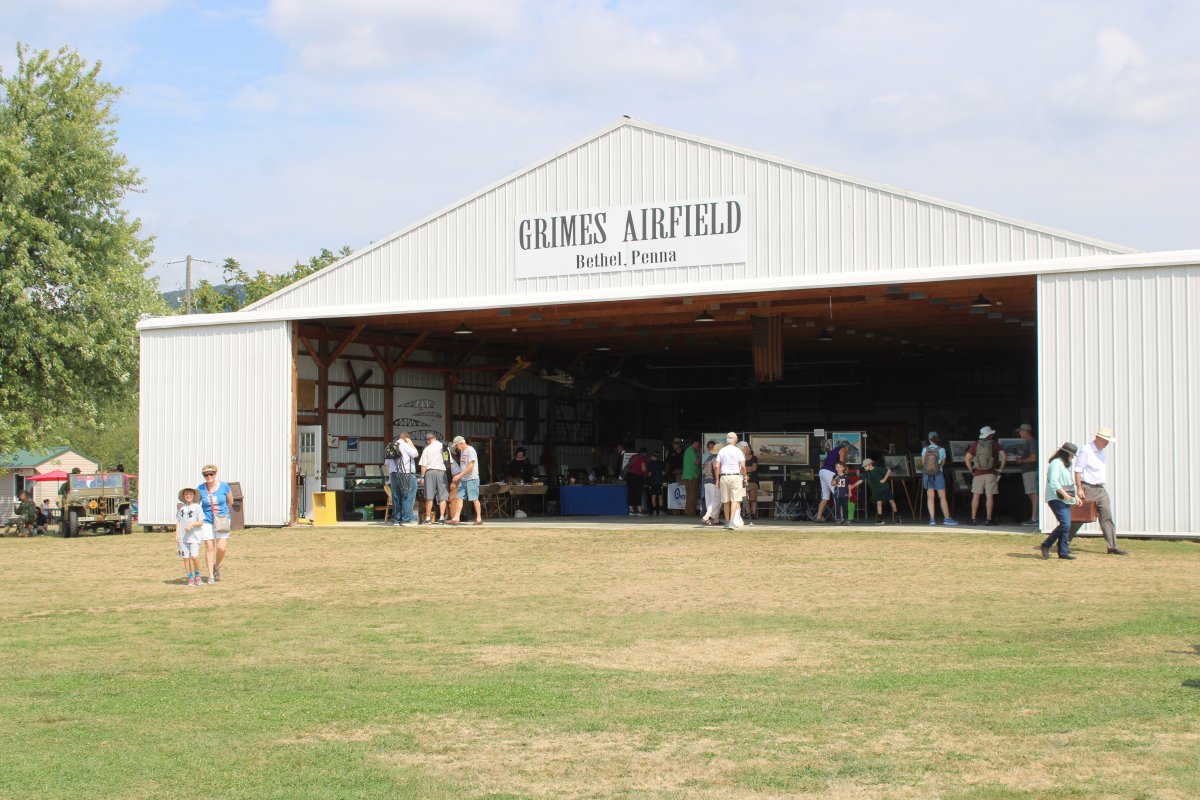 |
|
This "Zebra" Triplane is owned by Chris Hill who in fact was the one who came up with the idea for this Triplane gathering and organized it. I know this plane, having flown up to Connecticut to see it just before it was completed by Jim Bruton ten years ago. Link. At that time it had a Lycoming O-320. Jim later sold the Triplane it to Chris who put a rare 80-hp Le Rhone rotary engine he had managed to acquire in the Triplane. In case you don't know, that involves a lot of work! As if that was not enough, he then was able to acquire a 120-hp Le Rhone 9Jb, the same kind of engine that powered the Dr. I prototype. Restoration of the engine included diagnosing and then correcting a 100-year-old manufacturing defect! That would have defeated most people, I think, especially me. This Triplane made the cover of Kitplanes in April; check out the excellent article: Link. |
| |
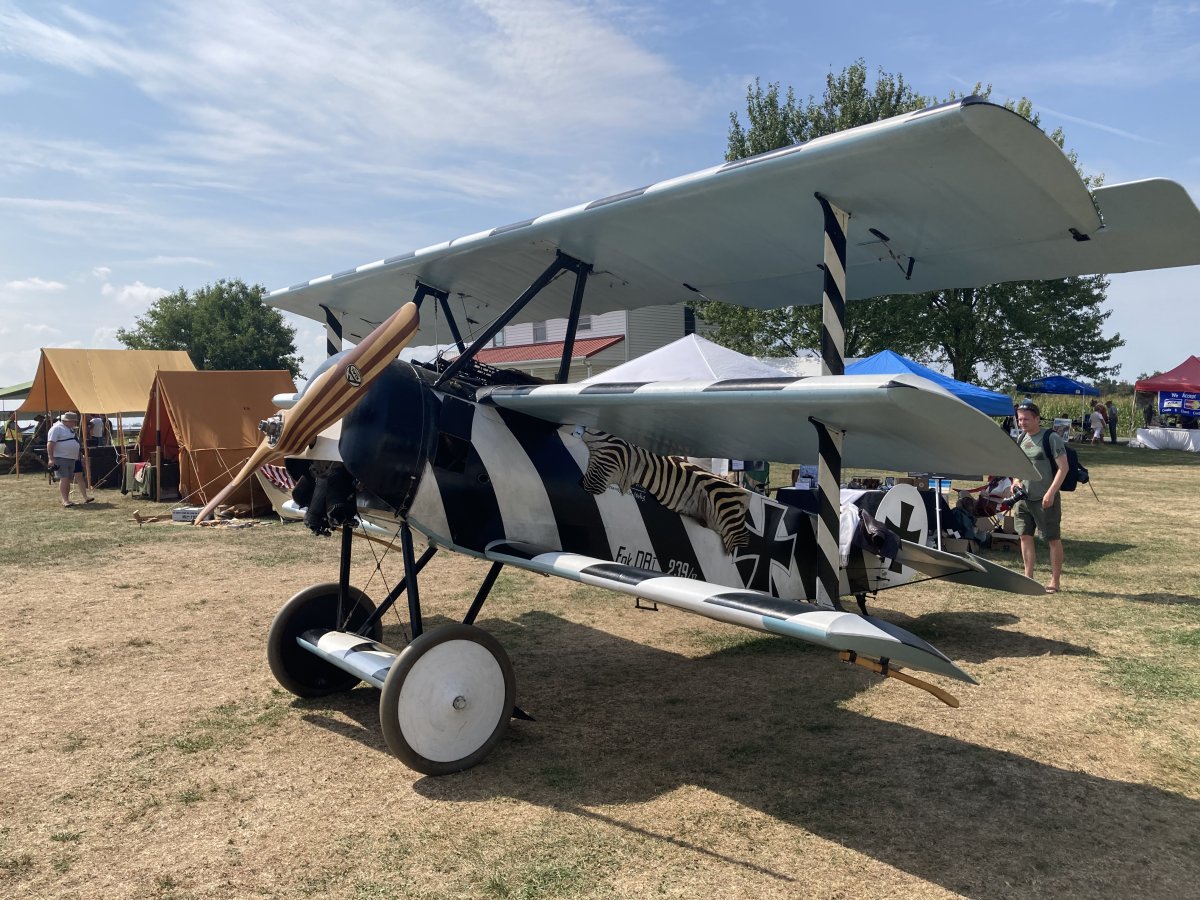 |
|
| A closer look at the rotary engine. |
| |
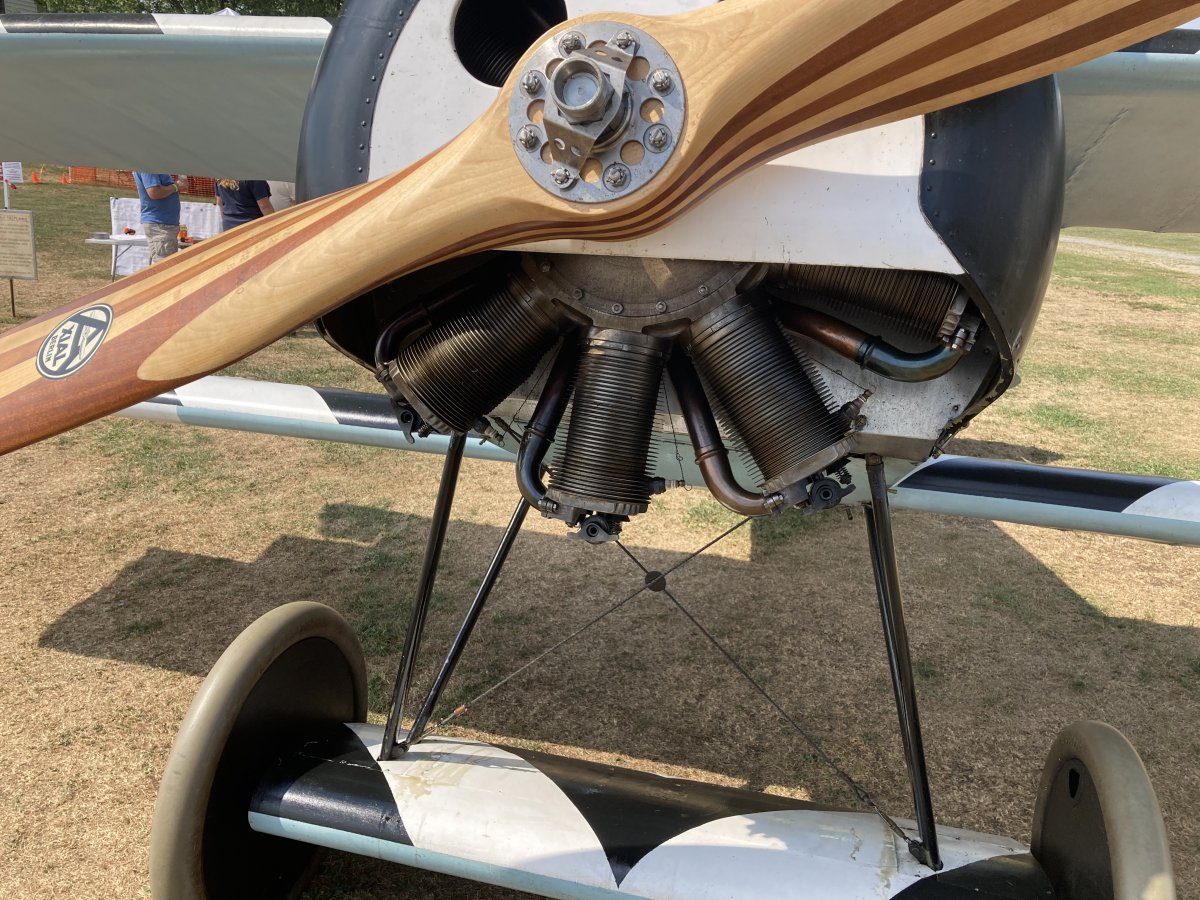 |
|
|
The Zebra skin aft of the cockpit is a nice touch.
|
| |
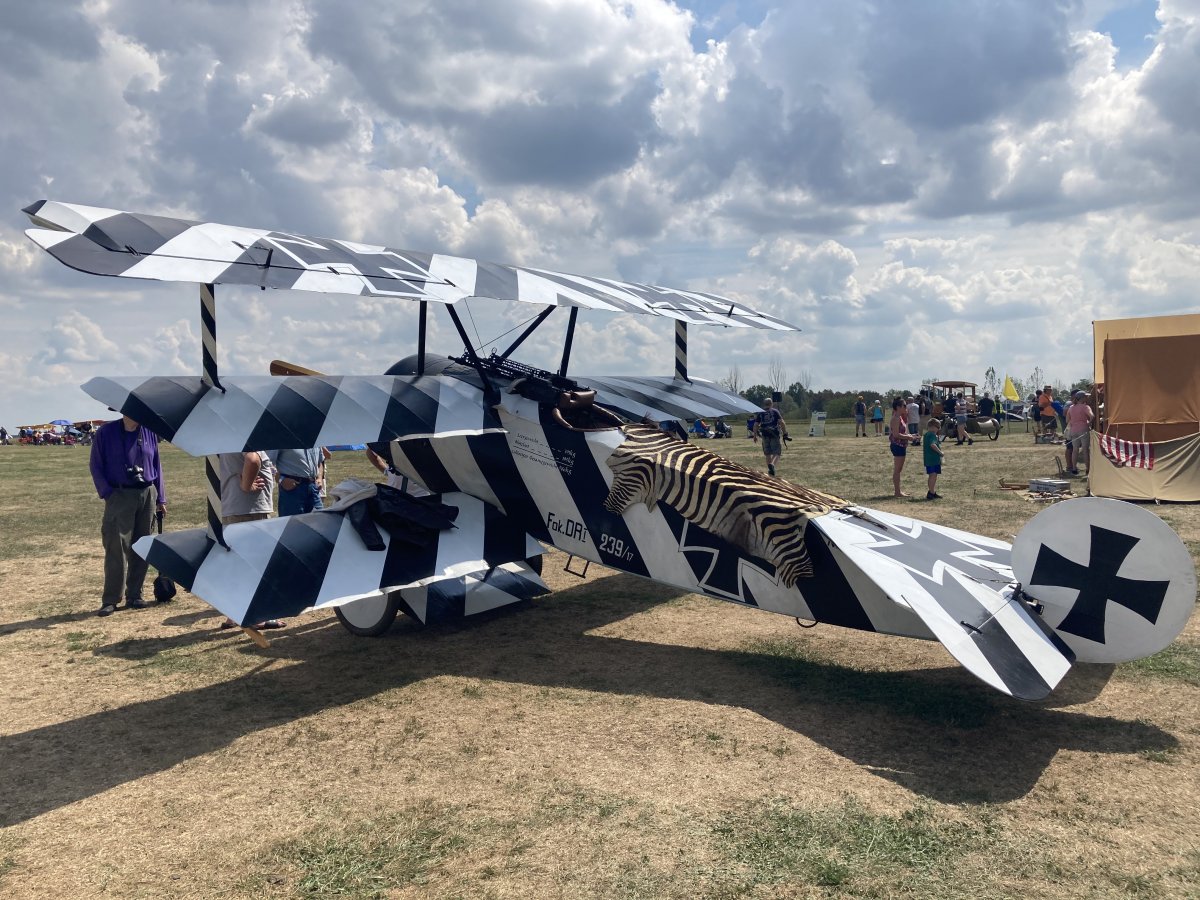 |
|
| |
| |
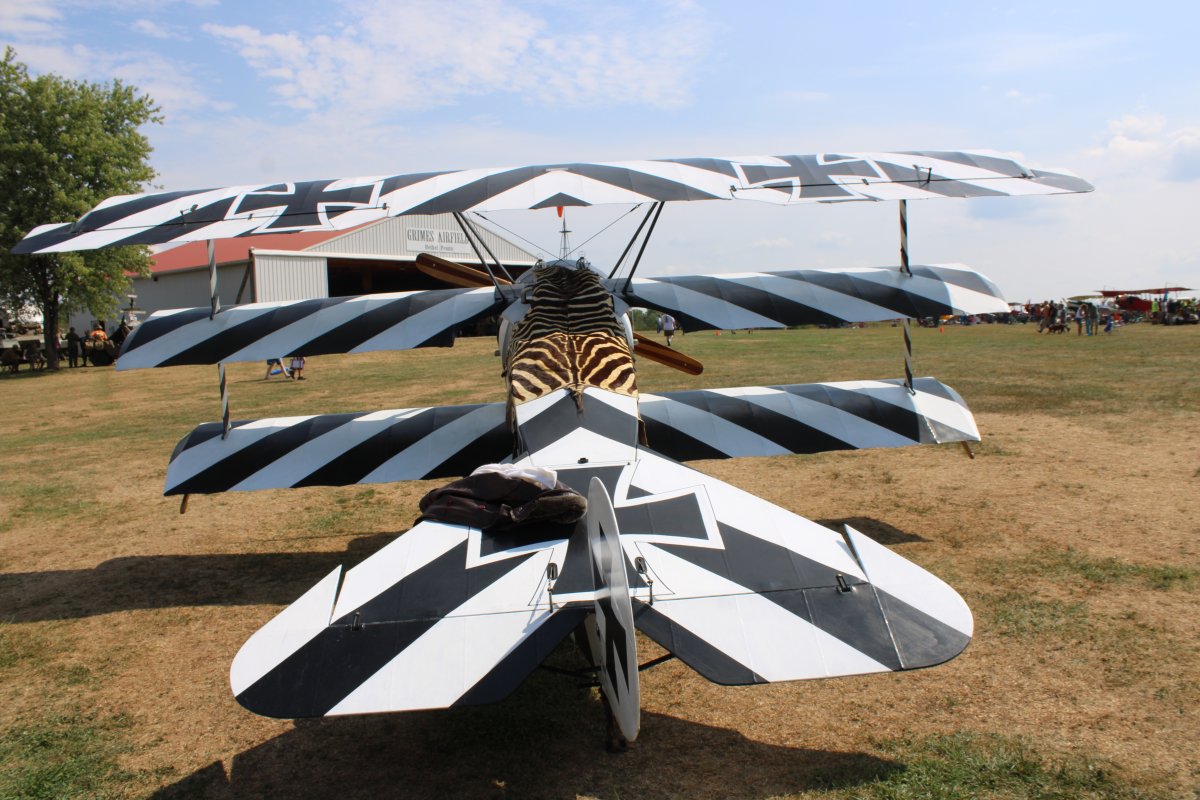 |
|
| The next Triplane was this beauty in the colors of the Red Baron: Manfred von Richtofen. This particular Triplane was built by Dana Narkulas, is owned by John Elliott, and flown by Andrew King. It used to be painted as Lothar Richtofen's machine but they transformed it into Manfred's 152/17 a few months ago so as to no longer be a twin to the Golden Age Air Museum Triplane. |
| |
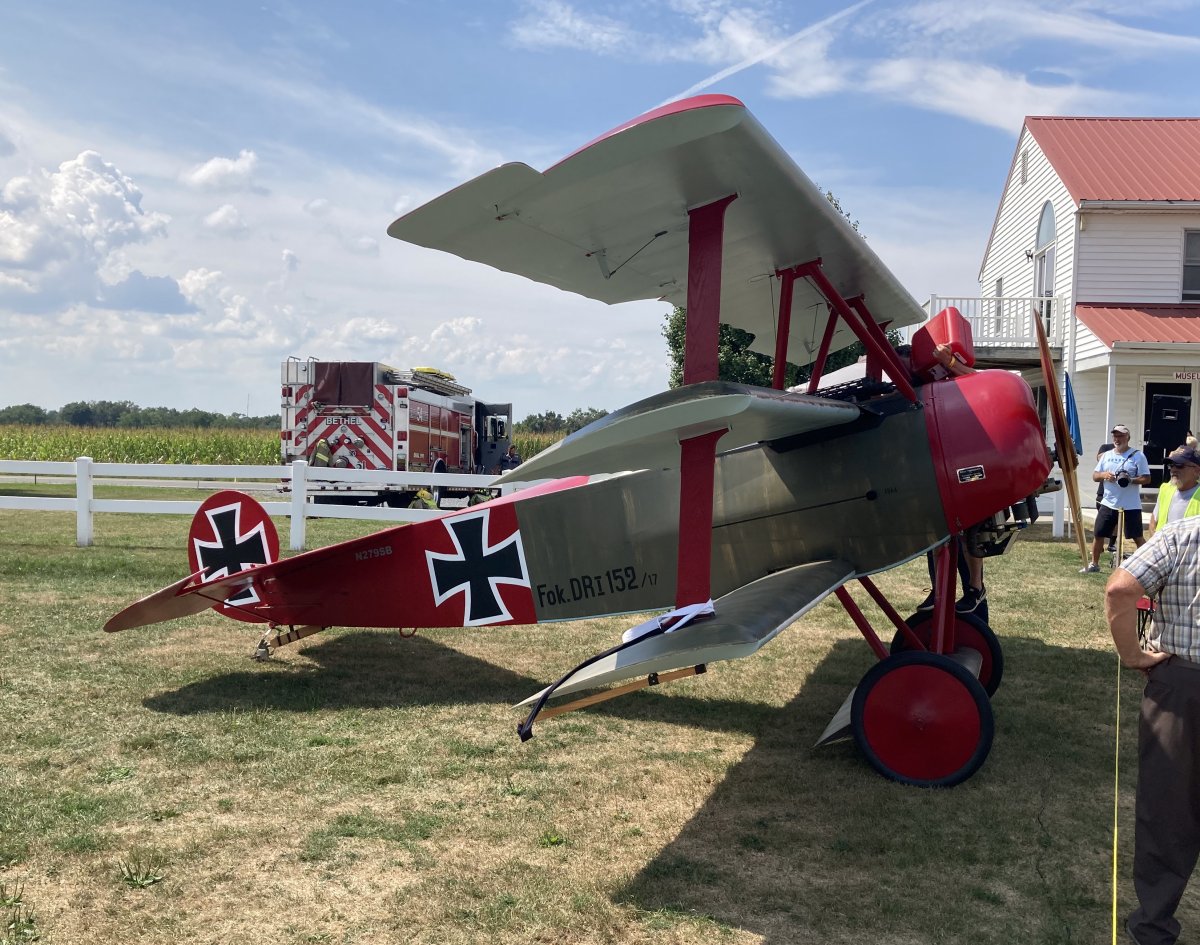 |
|
|
|
| |
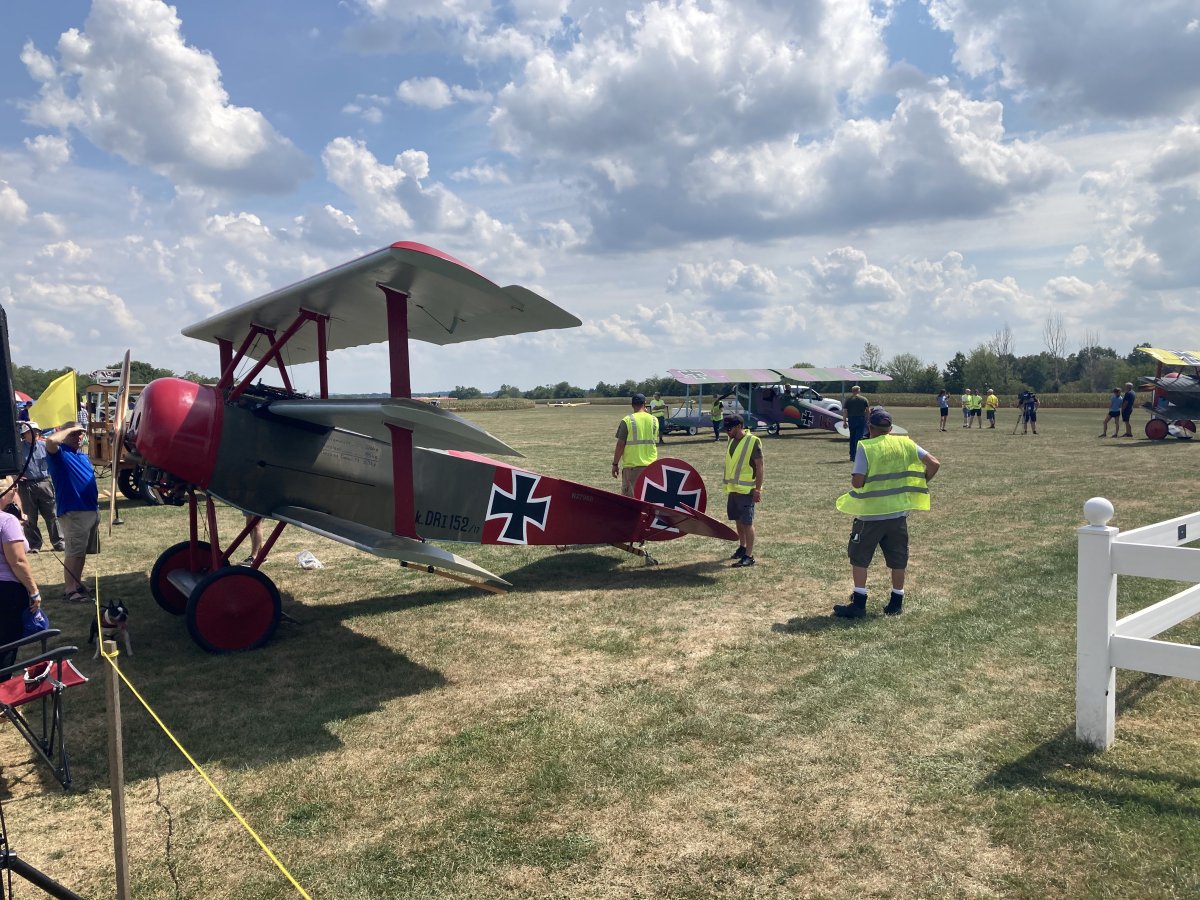 |
|
|
This Triplane has a modern Lycoming engine. There is absolutely nothing wrong with that, in my opinion. The rotary engines are more historically accurate, and cool, I suppose, but man, are they high-maintenance! You need a ground crew to start and taxi a Triplane with one, and they throw castor oil all over the airplane on every flight, just to mention a couple of factors.
|
| |
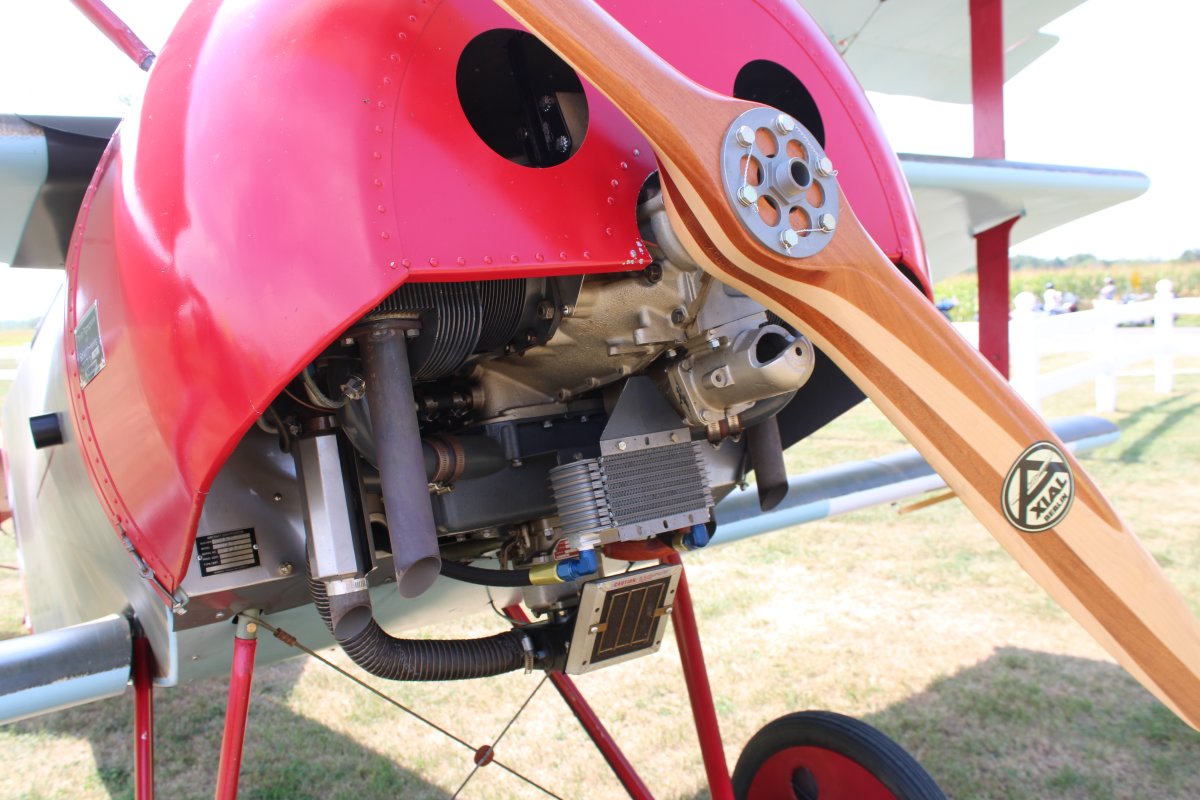 |
|
|
Andrew King pre-flighting the Red Baron Triplane.
|
| |
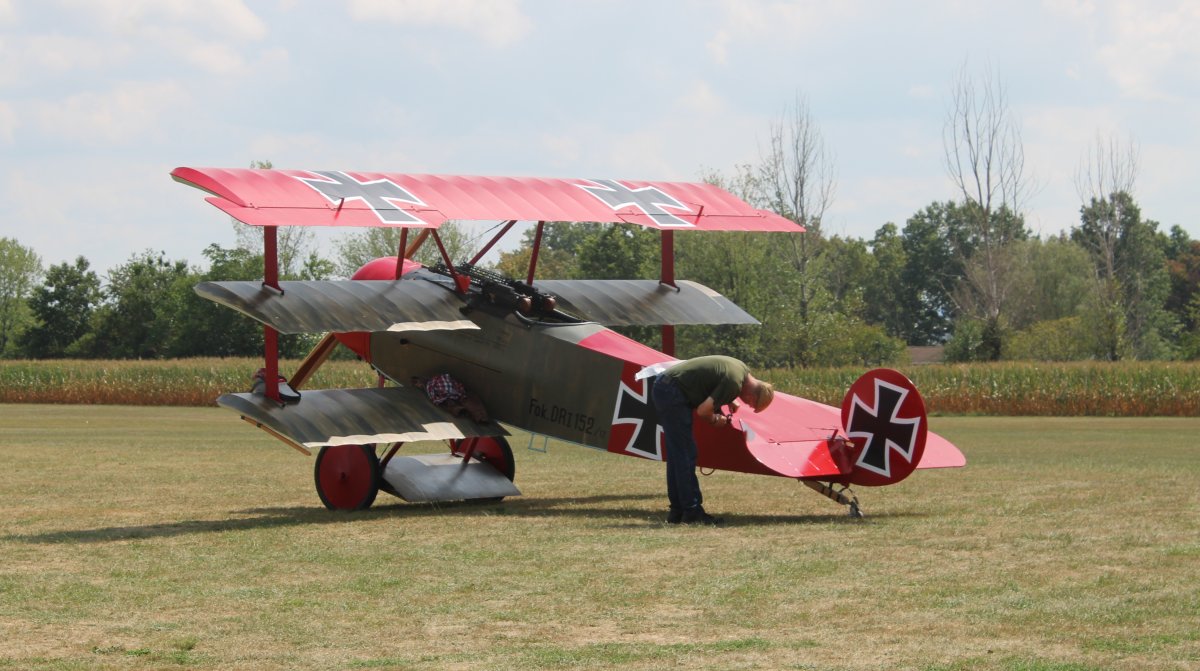 |
|
| The Golden Age Air Museum Triplane, painted in the markings of Lothar von Richtofen -- Manfred's brother . I have seen it many times and it looks just as good as the day they finished building it. Lothar was no slouch of a fighter pilot himself, with 40 victories. He survived the war, but died in a flying accident in 1922 at age 22. |
| |
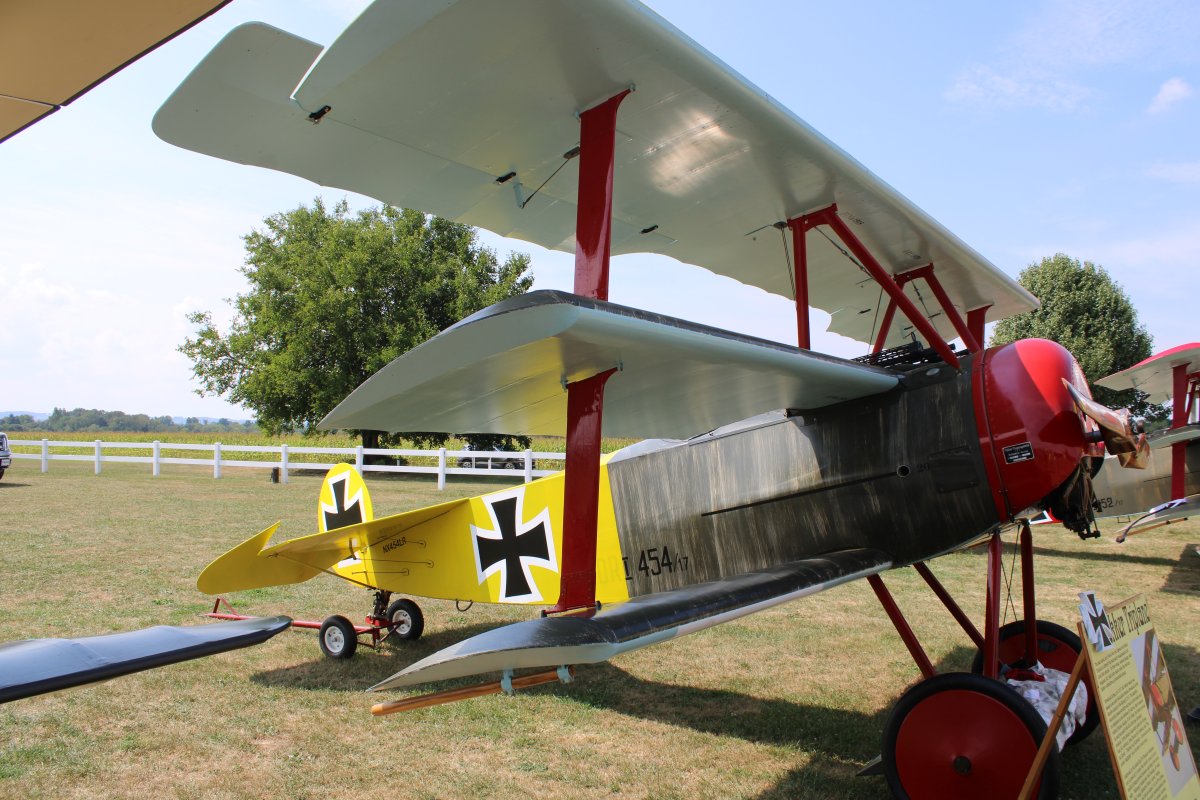 |
|
| I didn't see the fourth Triplane on the flightline, but found it in the maintenance hangar. This one is owned by Fred Murrin. But look at the lower left wing. |
| |
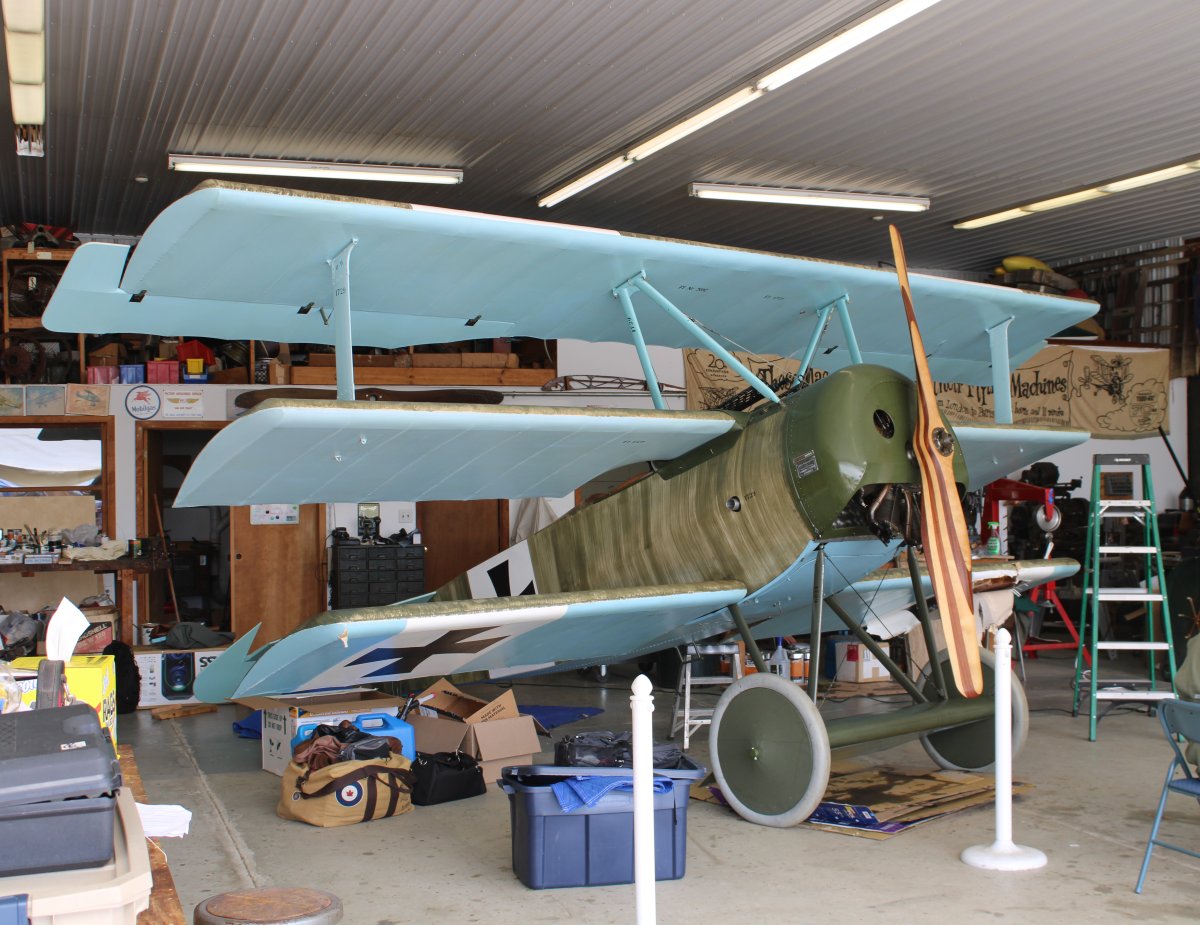 |
|
| This Triplane also has the rotary engine. |
| |
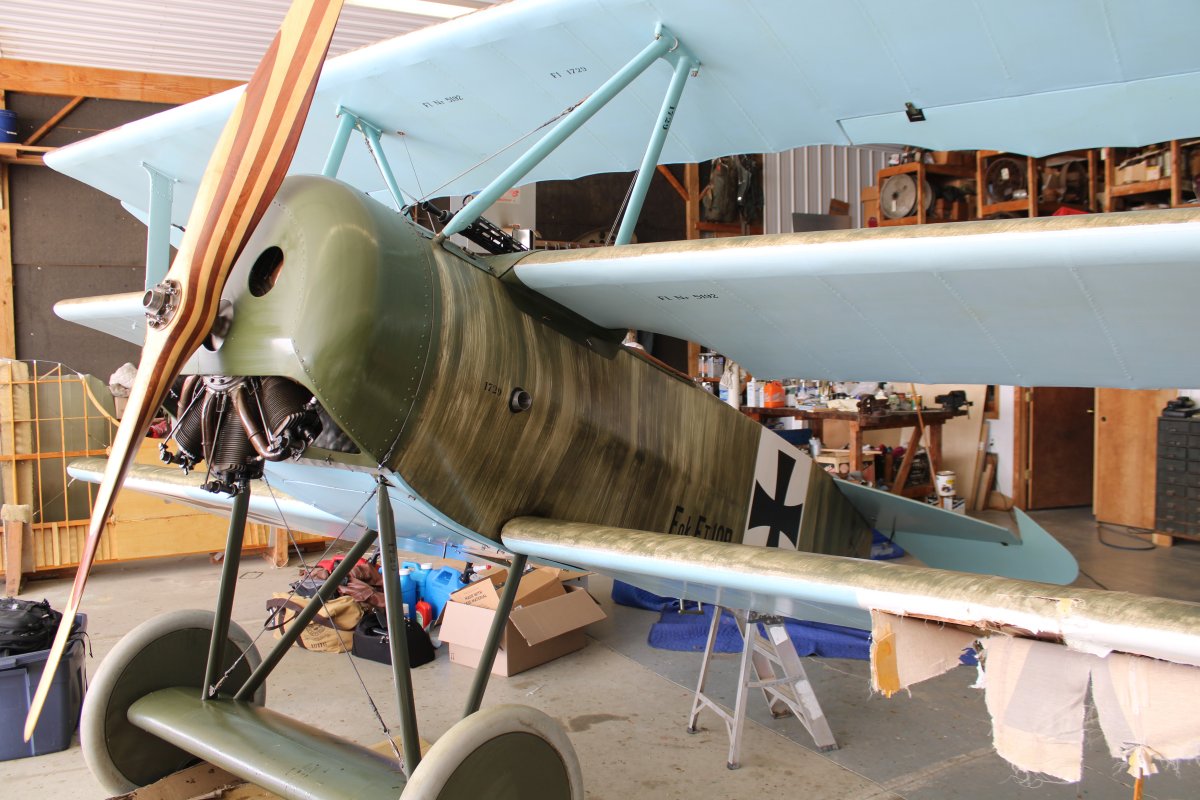 |
|
|
I found out later that this Triplane's engine quit while flying yesterday, and the pilot had to make a forced landing in a nearby field. The lower left wing hit a post which damaged the leading edge, a few ribs and even the box spar.
Needless to say, this Triplane would not be flying in today's airshow.
And then there were three.
|
| |
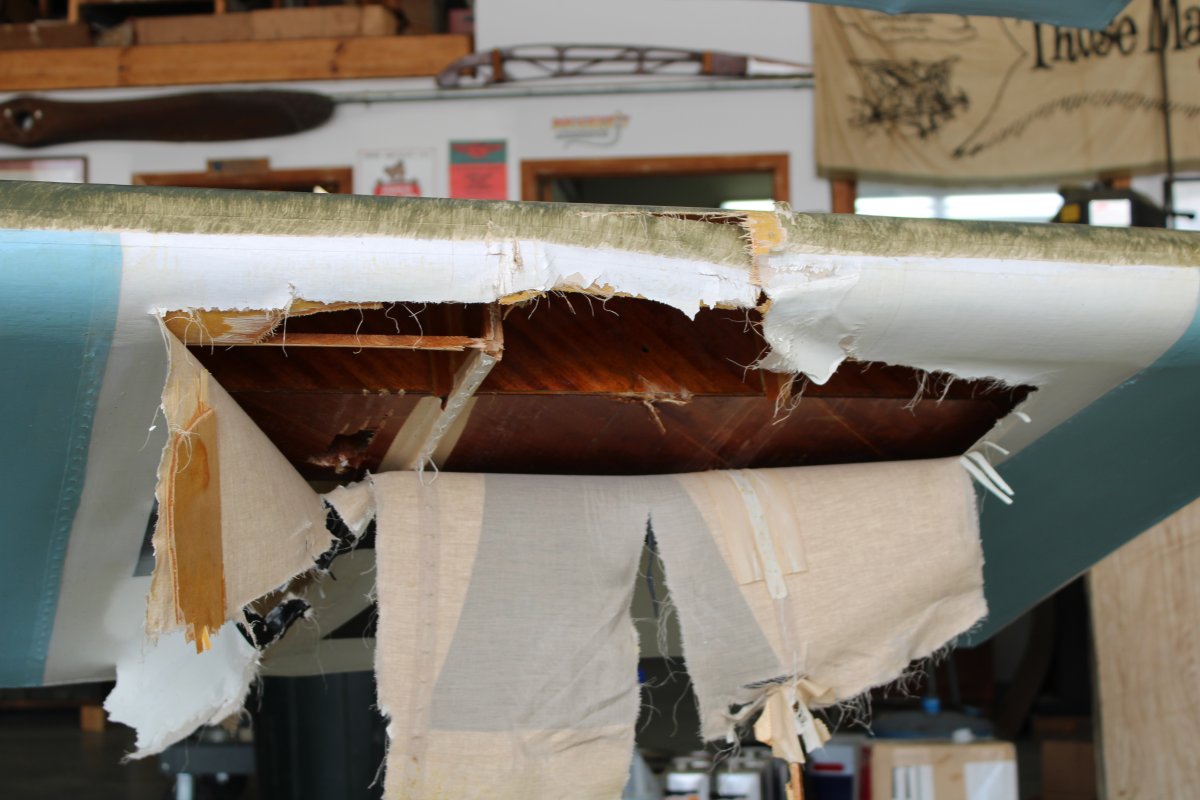 |
|
| Close-up of the rotary engine. |
| |
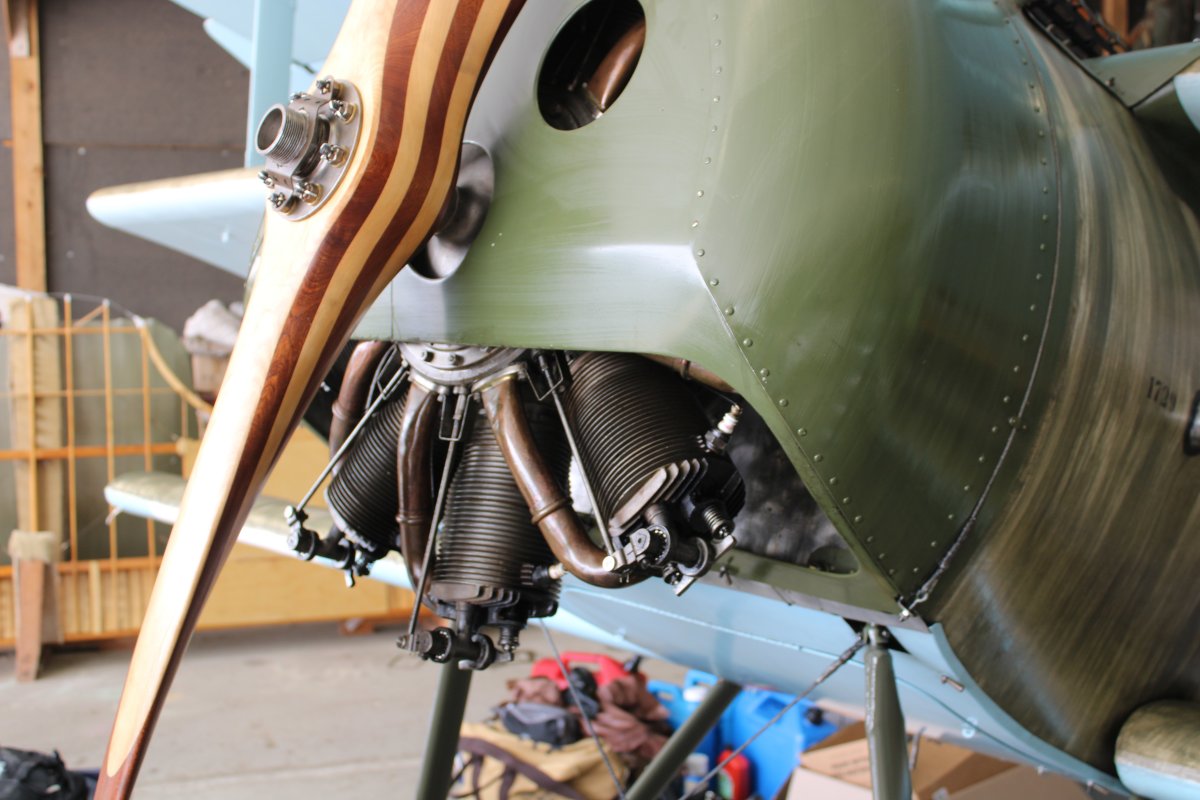 |
|
|
Griffin getting some open cockpit biplane time.
|
| |
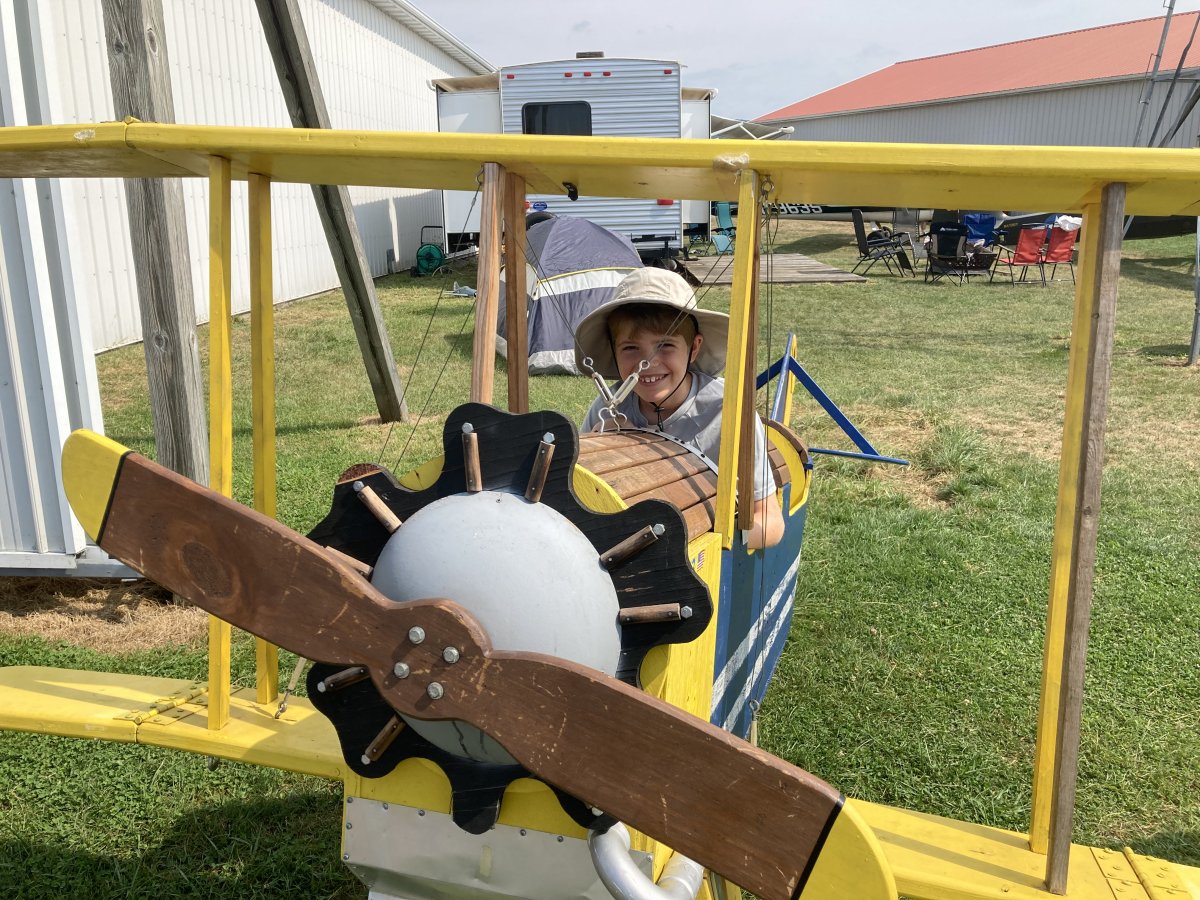 |
|
| The folks at Golden Age Air Museum have been building a 1918 Spad XIII for years. This is the freshly-covered fuselage. |
| |
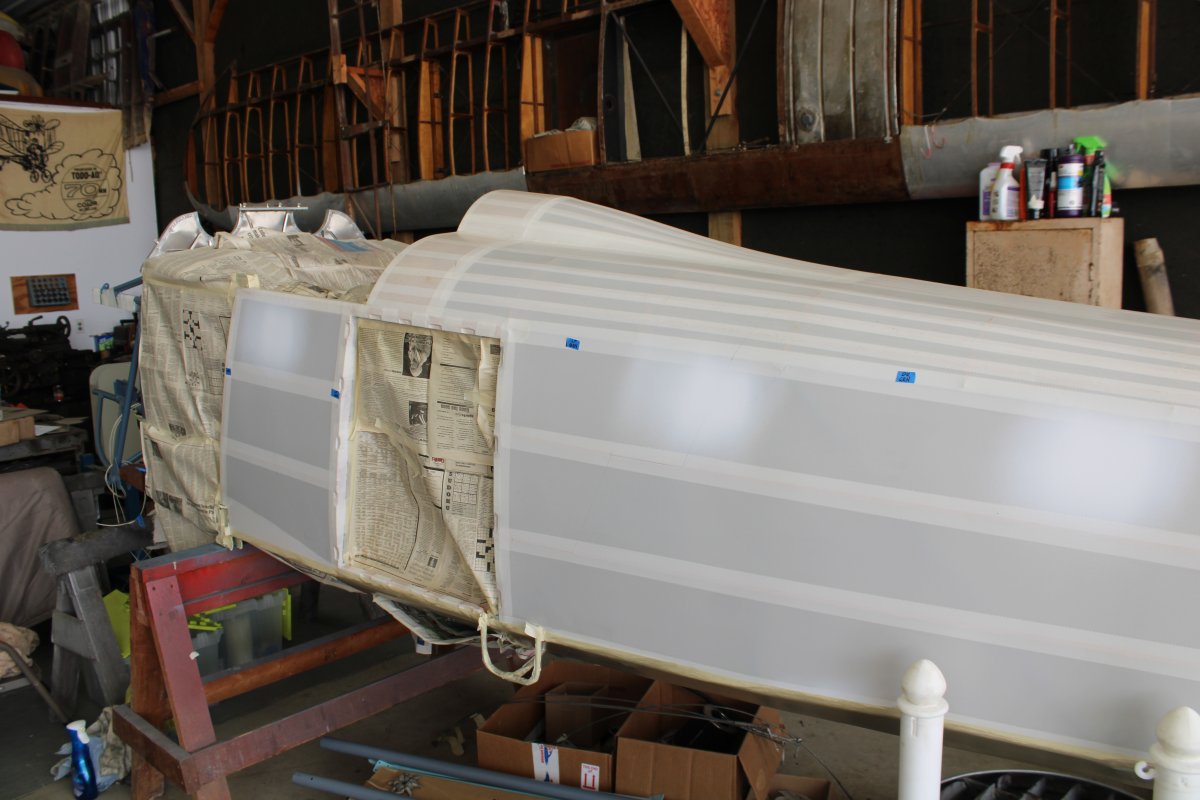 |
|
|
I'm guessing these are the Spad wings. One is covered and painted, the other is not.
During the airshow, the annoucer said the Spad could possibly be flying next Spring.
|
| |
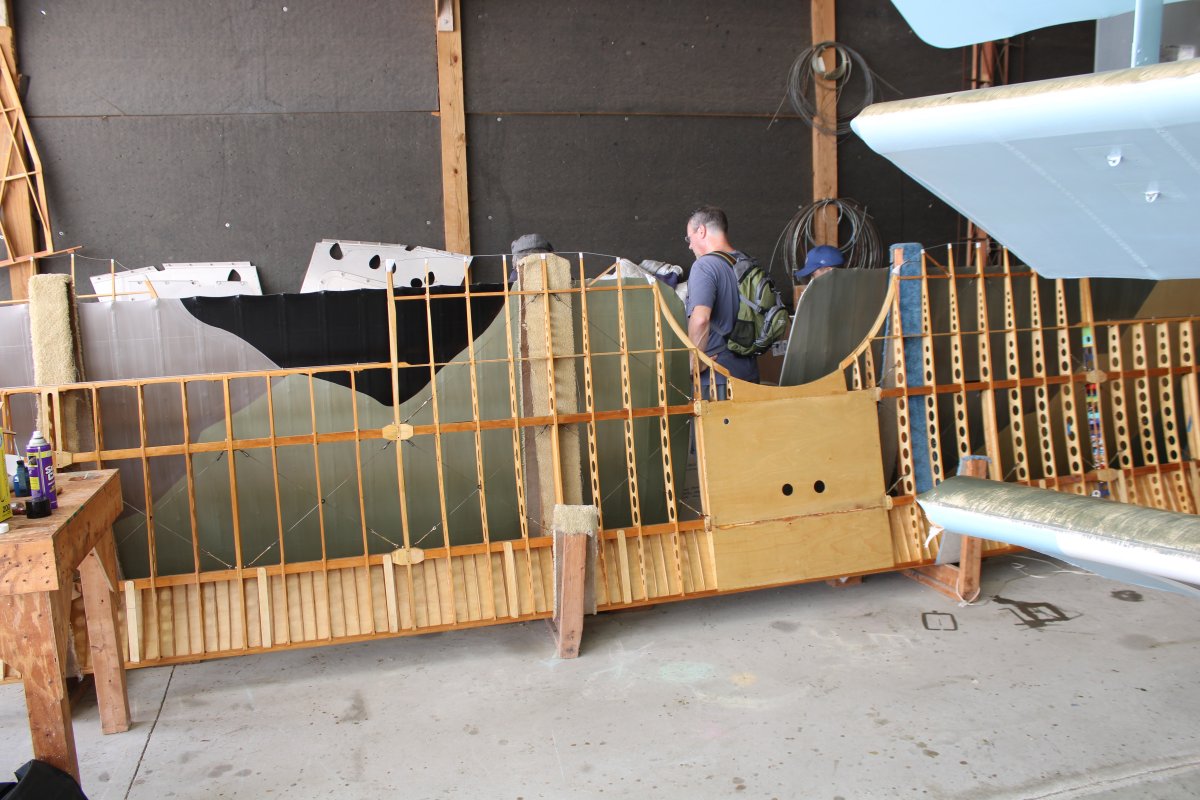 |
|
|
This is the "Fokker Triplane" tent with information on building your own Triplane. It's harder than it looks, folks!
There were some vendors on hand selling memorabelia, books and aviation art as well.
|
| |
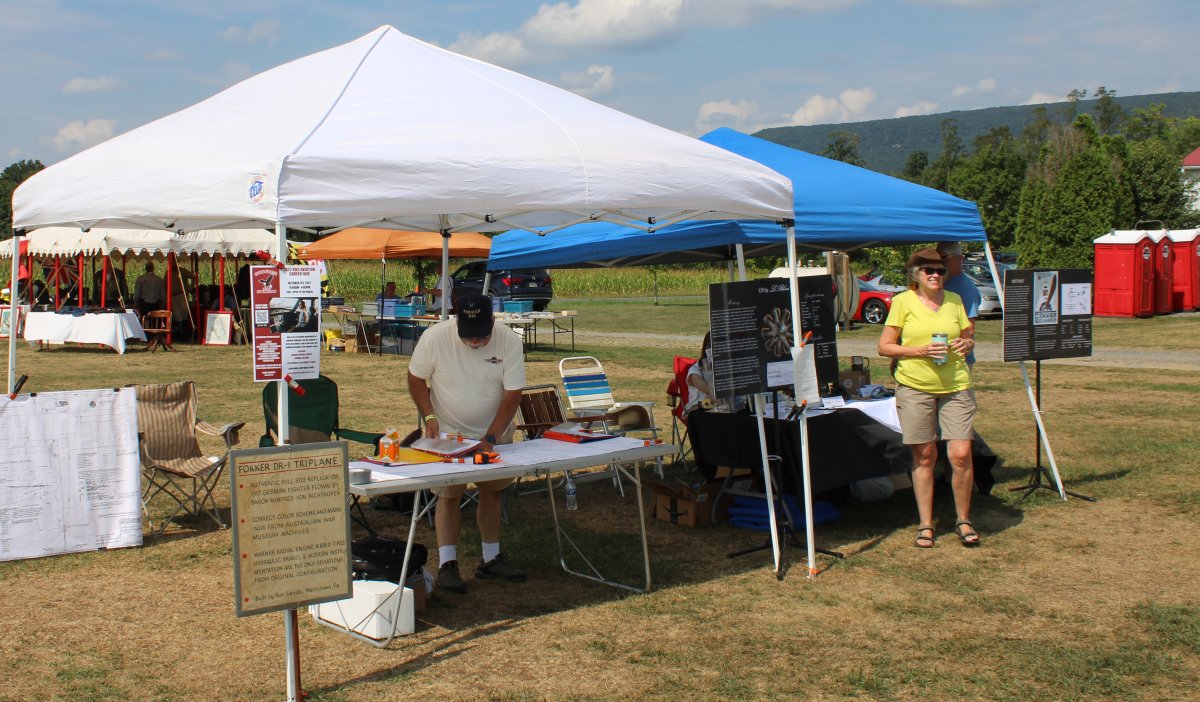 |
|
| People starting to get situated for the airshow. As soon as I saw the flight line, it became clear why airplane were not allowed to fly in. There is no parking space. Because it's an airshow, FAA regulations apply and spectators have to a certain distance -- too far -- away from the runway. |
| |
 |
|
|
Looking down the flight line.
|
| |
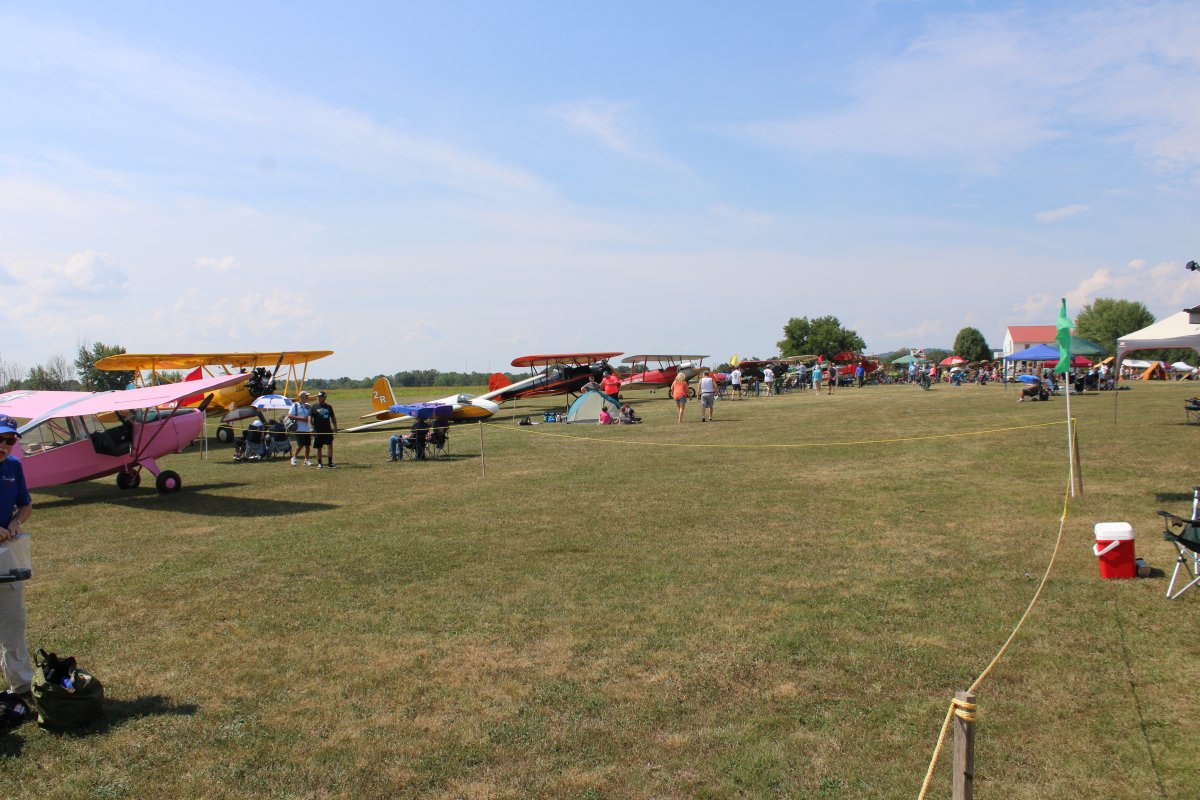 |
|
|
At the end of the line was Mark Meredith and "Chippy", Mark's Super Chipmonk that he completely restored and now flies airshows in.
|
| |
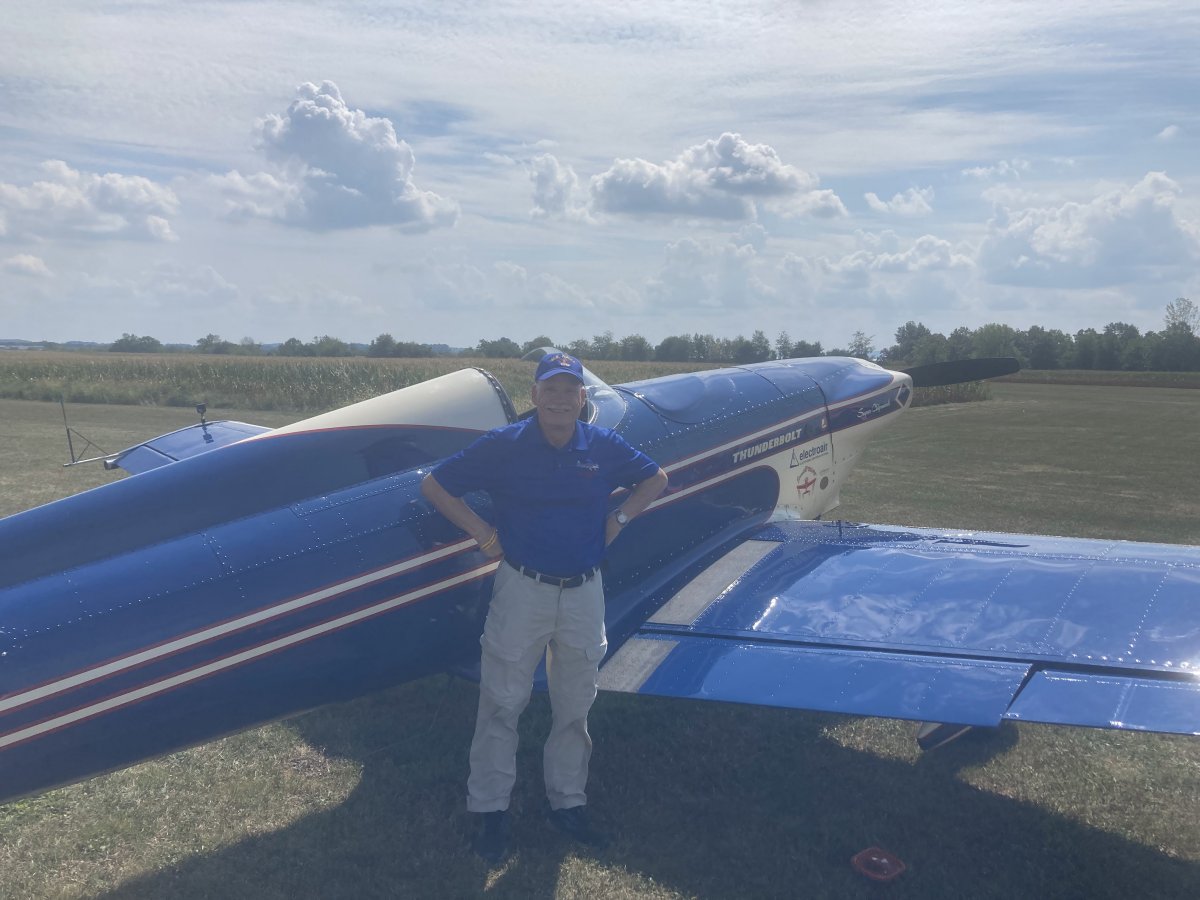 |
|
|
Griffin stands in front of Chippy. Mark would be flying Chippy in today's air show.
|
| |
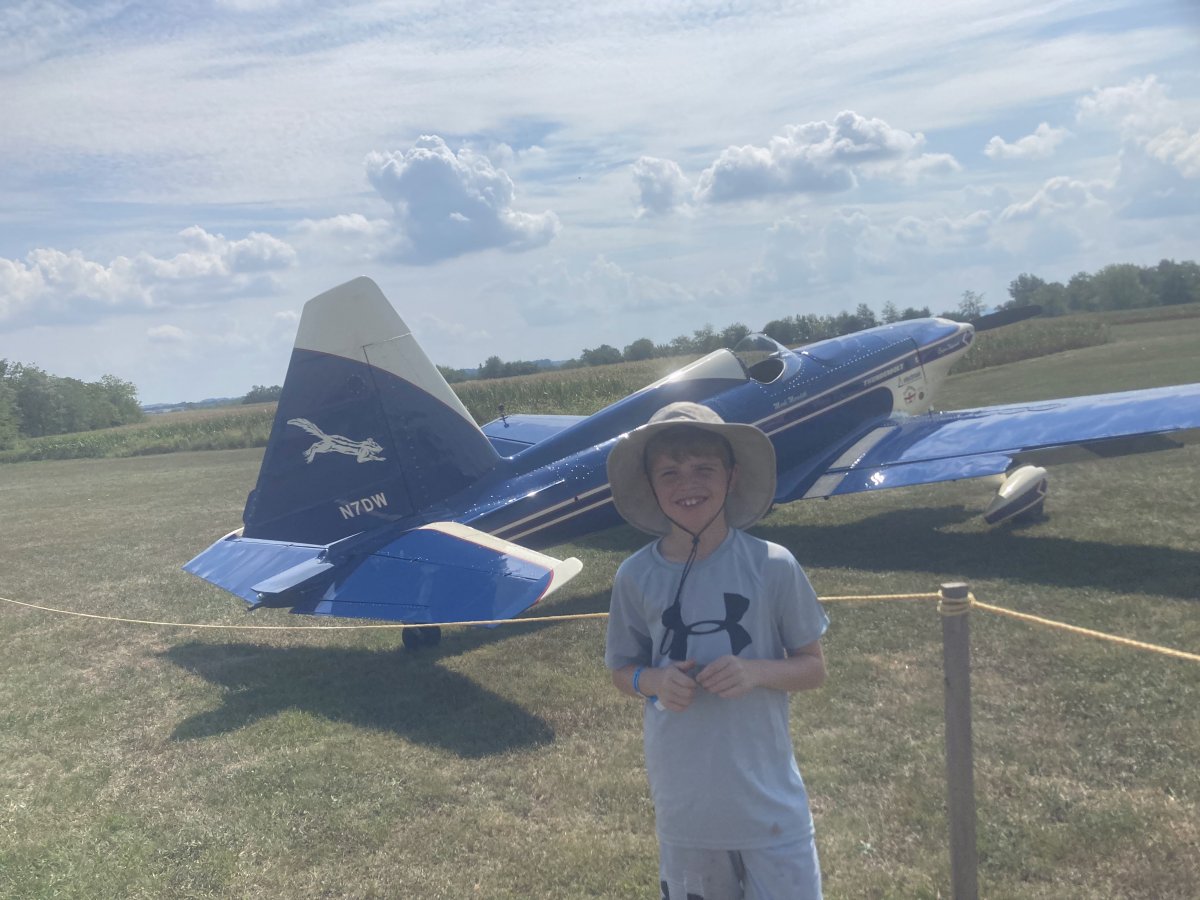 |
|
| The Golden Age Air Museum's immaculate Curtiss Jenny. |
| |
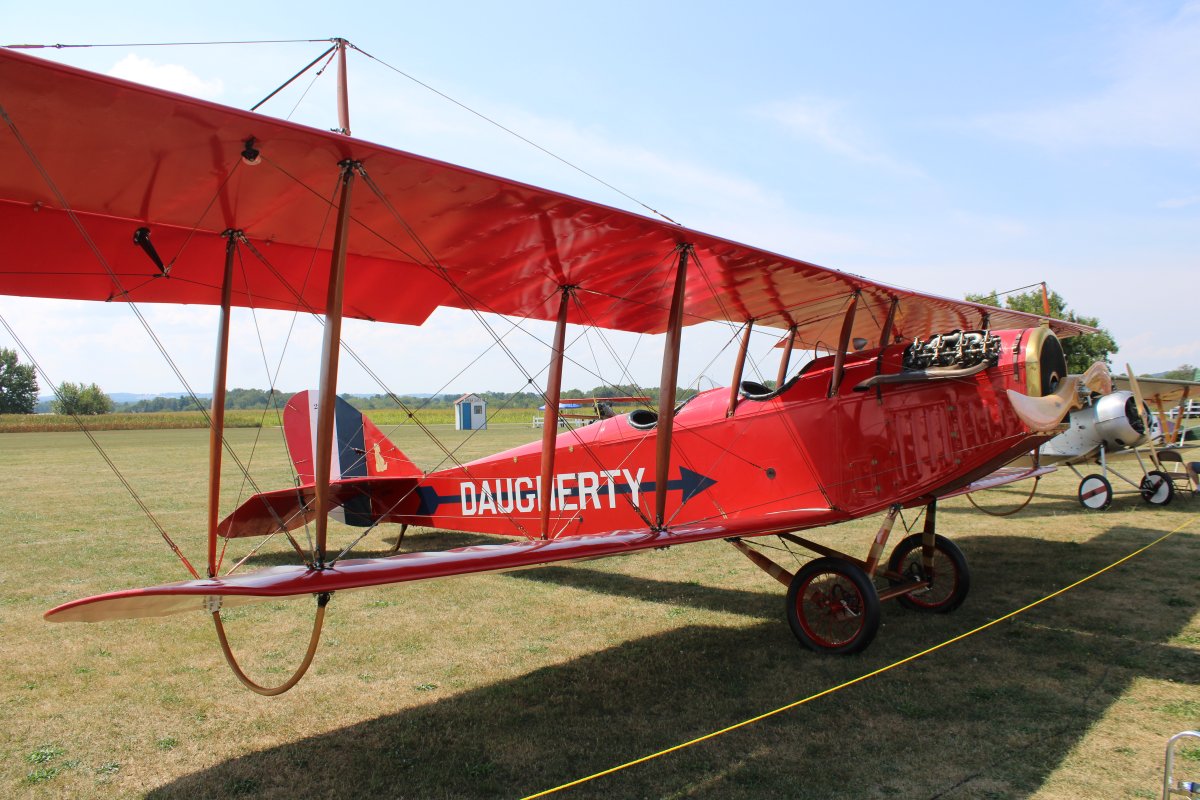 |
|
|
A little French Nieuport 17, also powered with a rotary engine.
|
| |
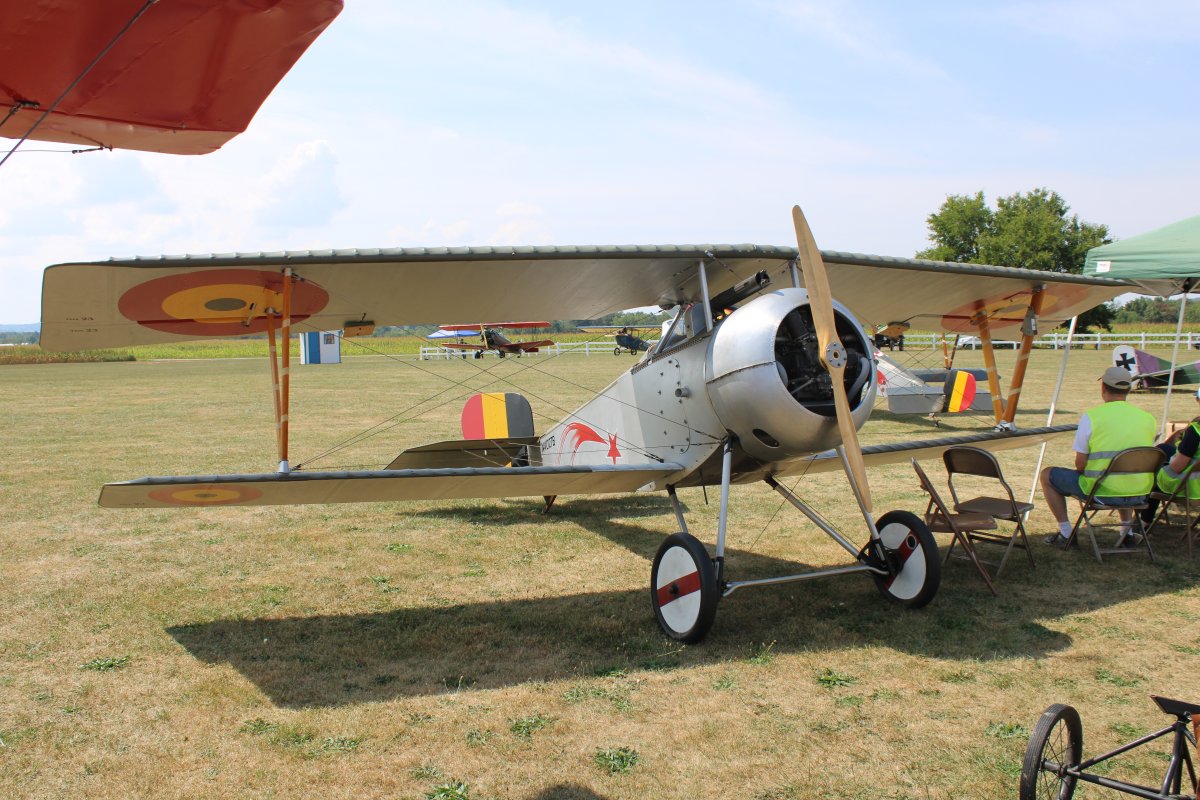 |
|
| The Nieuport looks completely different viewed from the rear. |
| |
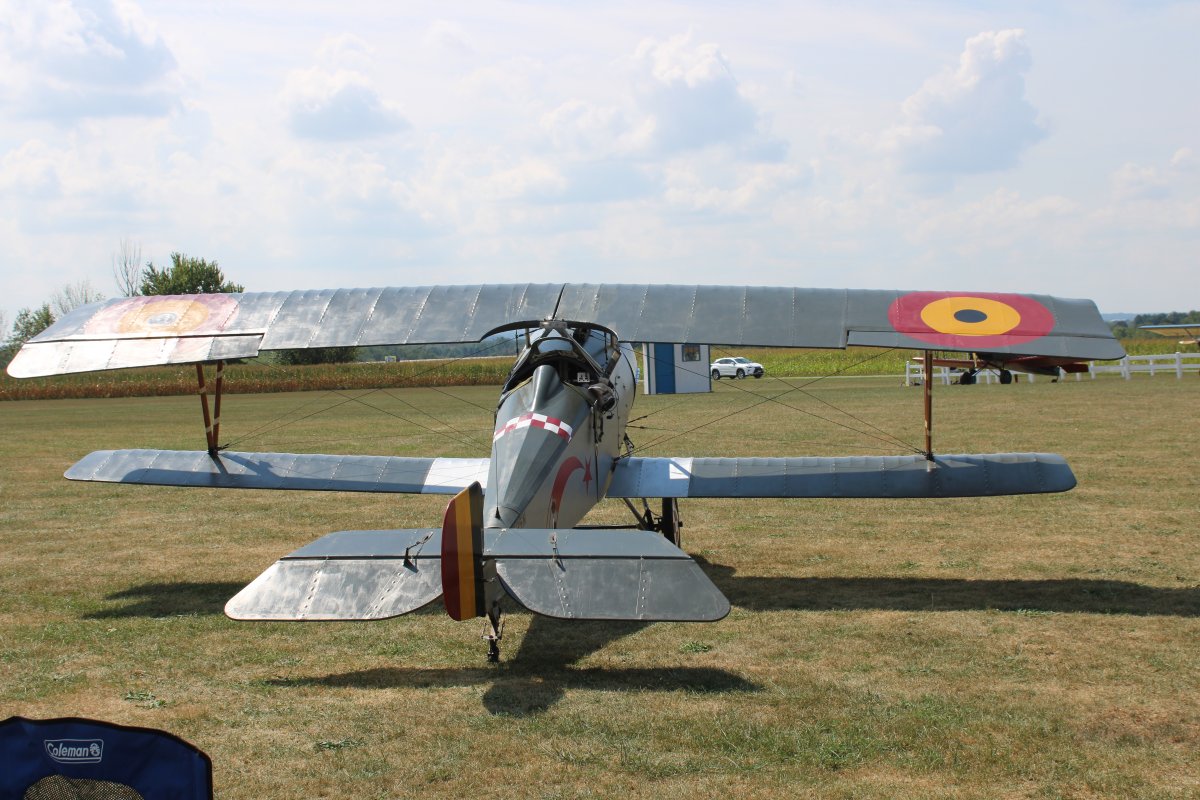 |
|
| A Sopwith Pup. Flown by the British in 1916, for a time it outclassed anything the Germans had. But after about a year, the Germans were flying fighters that could beat it. |
| |
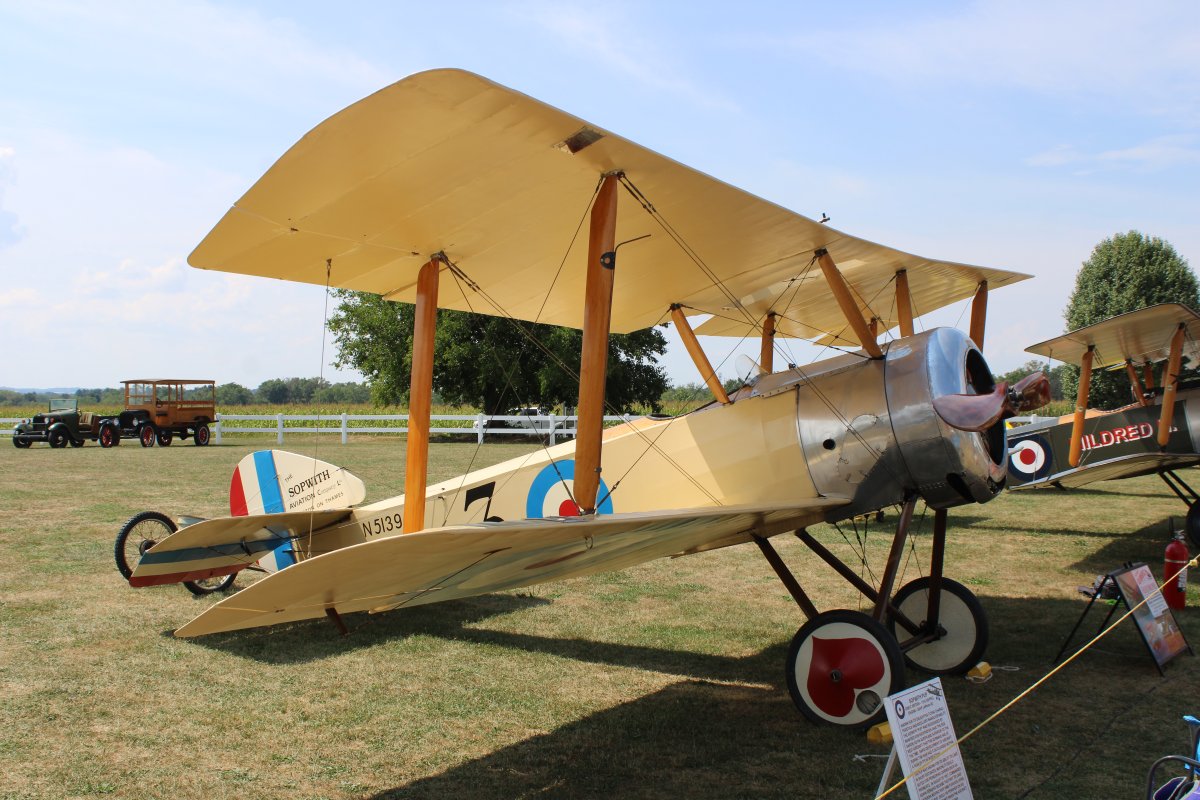 |
|
| This particular plane is owned and operated by the famous Old Rhinebeck Aerodrome, up in the Hudson River valley, Red Hook, New York. I've been meaning to get up there and see it for years. One of these days .... |
| |
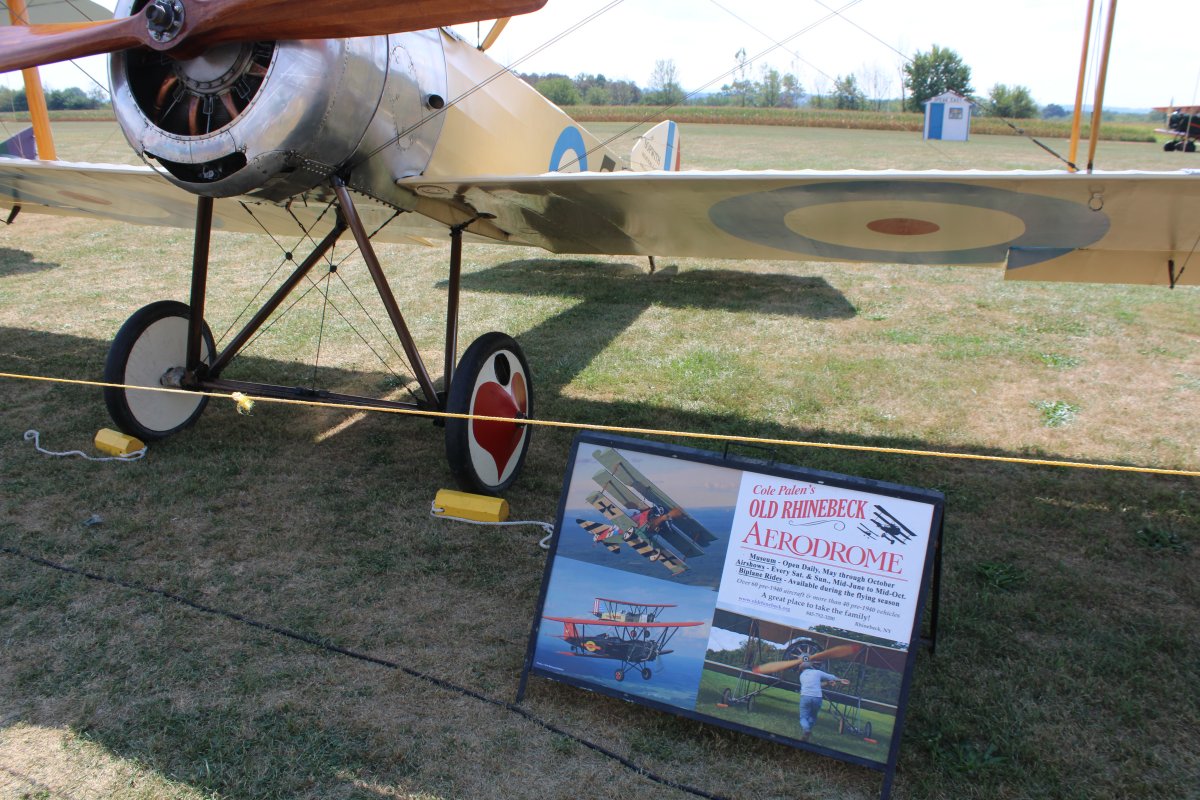 |
|
|
This Pup is also rotory-powered with the 80 hp LeRhone 9C.
|
| |
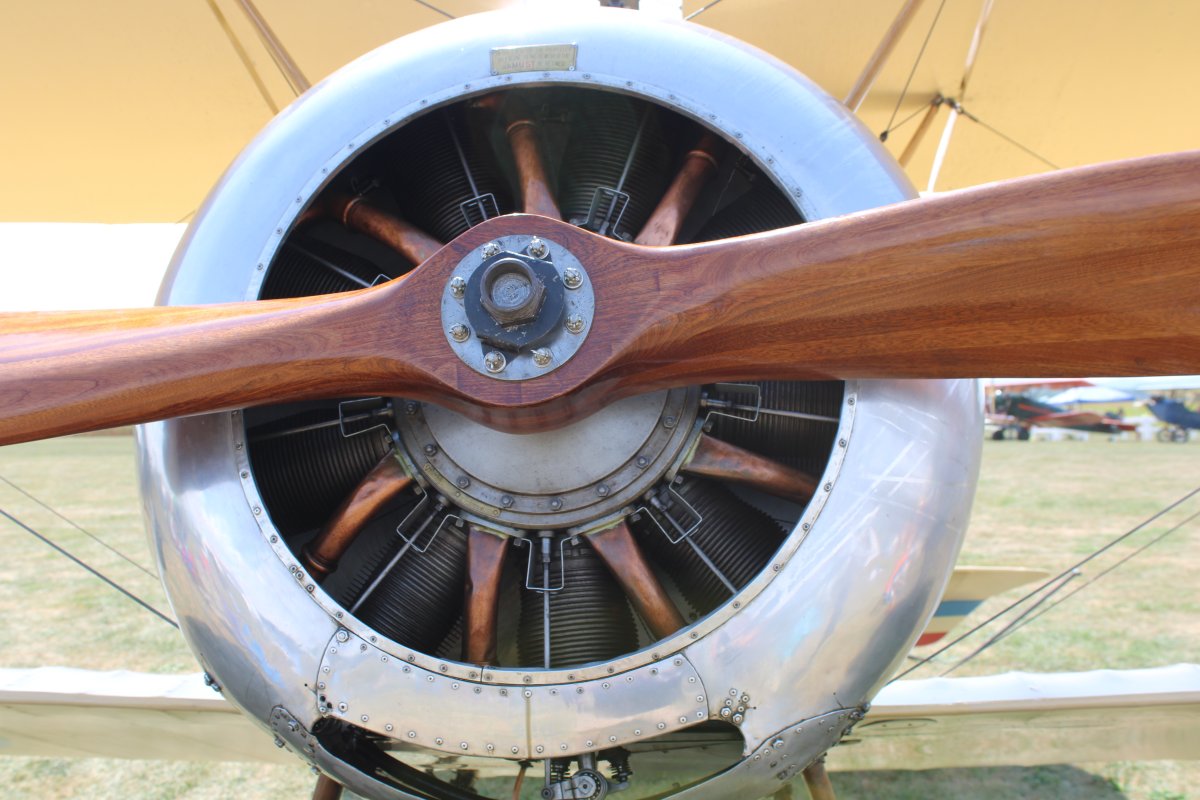 |
|
| The Golden Age Air Museum Sopwith Pup, powered by a Lycoming O-320. |
| |
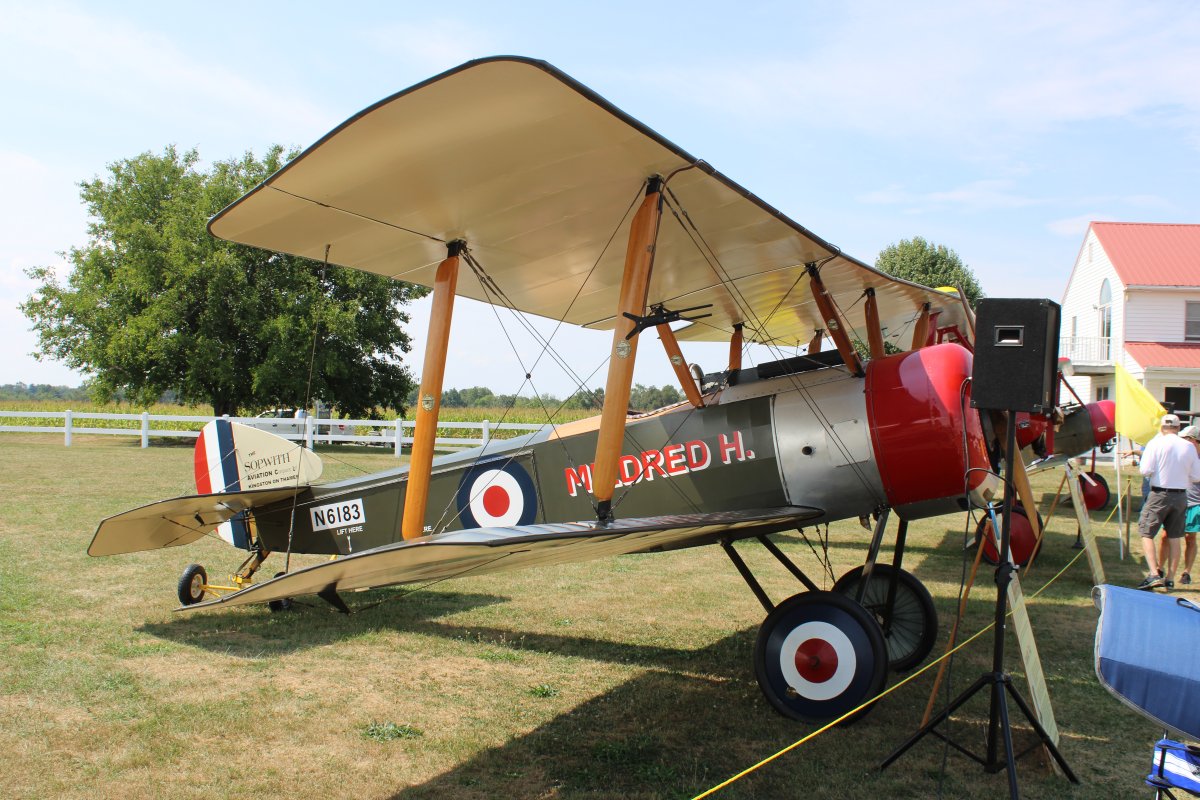 |
|
|
Re-enacters were on hand. It was hot afternoon and most of the re-enacters were wearing the World War I era heavy wool uniforms. Even that dog looks hot.
|
| |
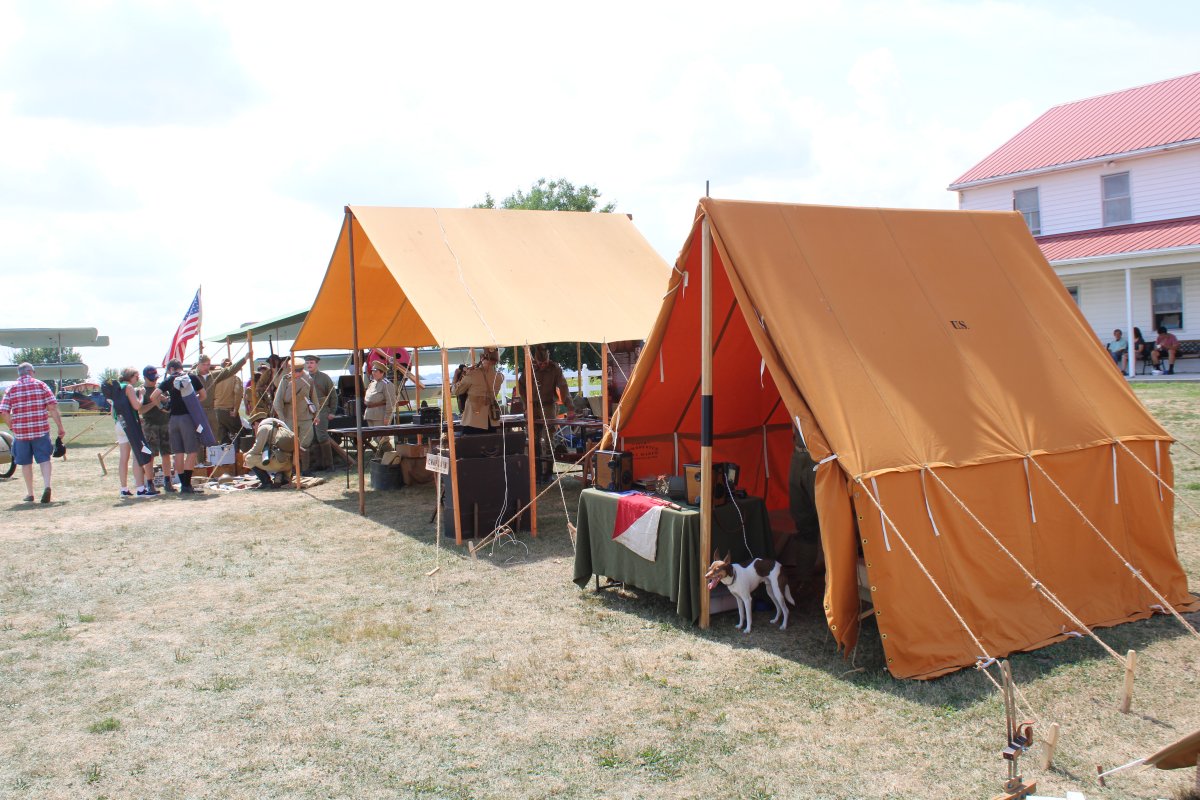 |
|
| A beautiful Cessna 195 sits alone in a hangar and doesn't get to come out and play. |
| |
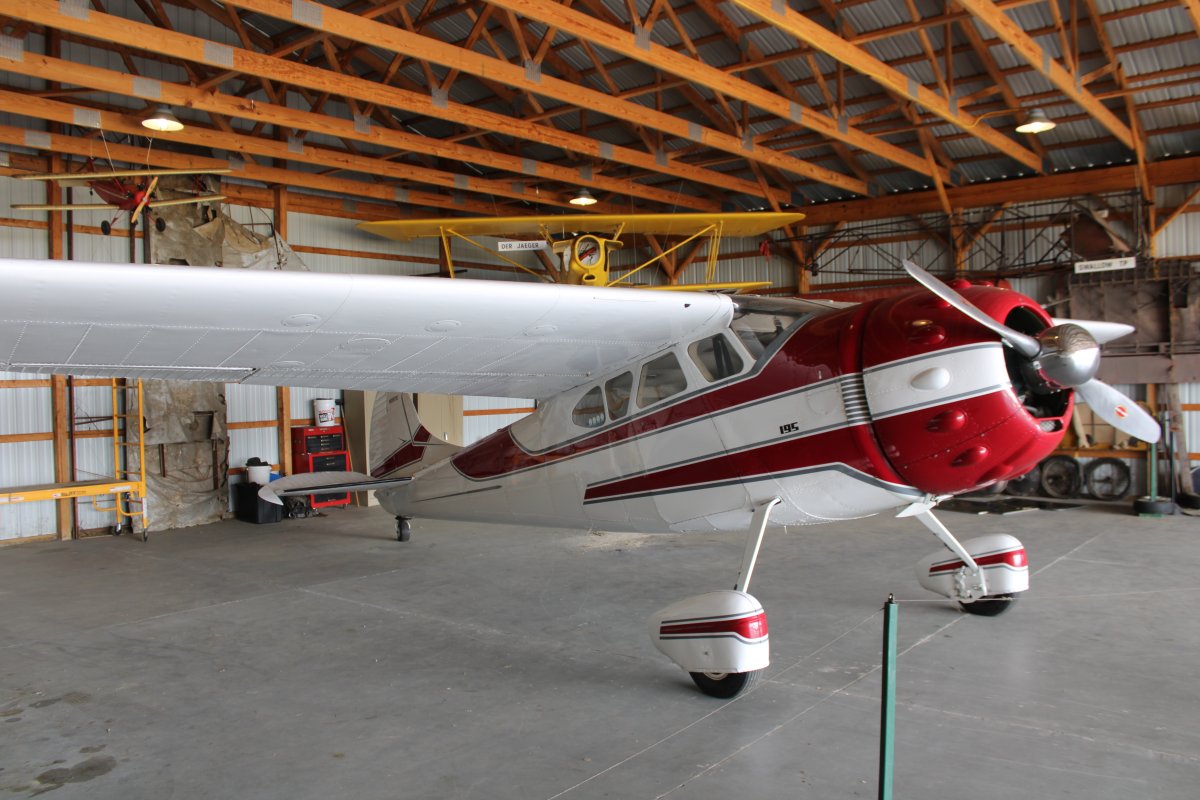 |
|
| A 1930 Fleet Model 7. It's powered by a Kinner B-5 radial. The aircraft was designed by Reuben Fleet of Consolidated Aircraft in 1928. |
| |
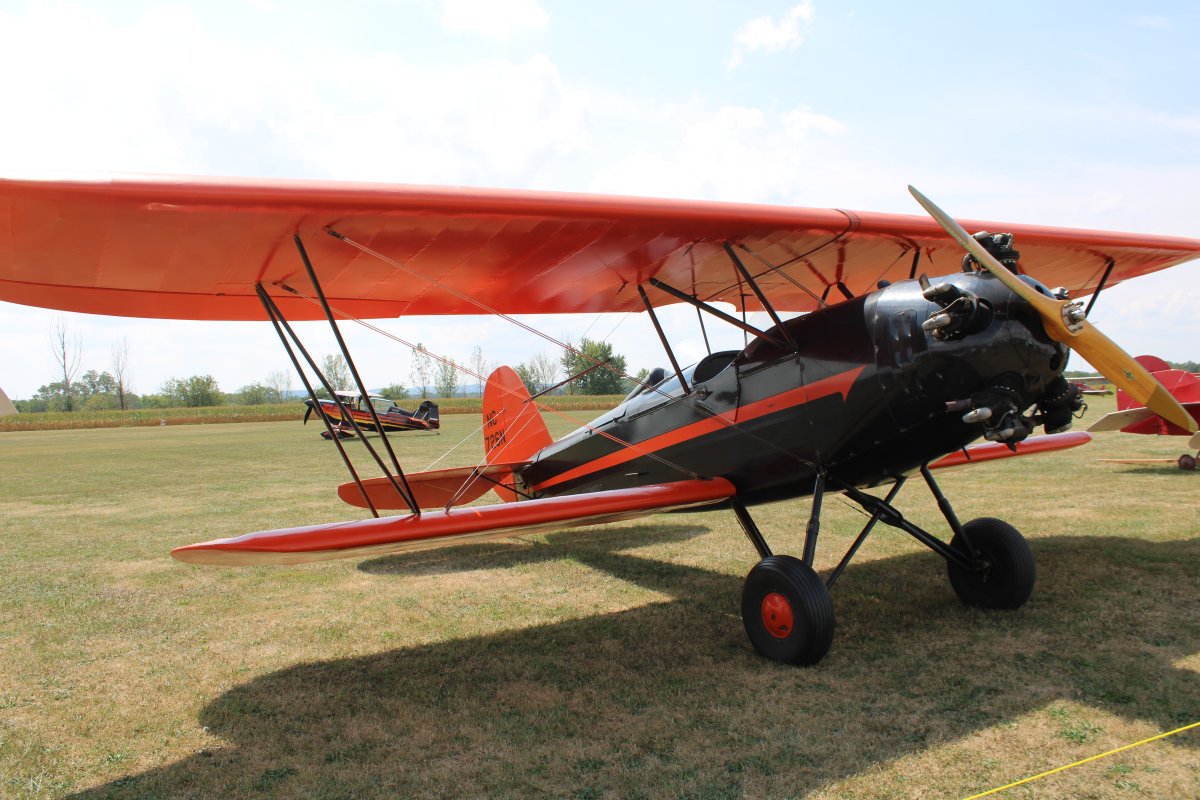 |
|
| 1927 Monocoupe. |
| |
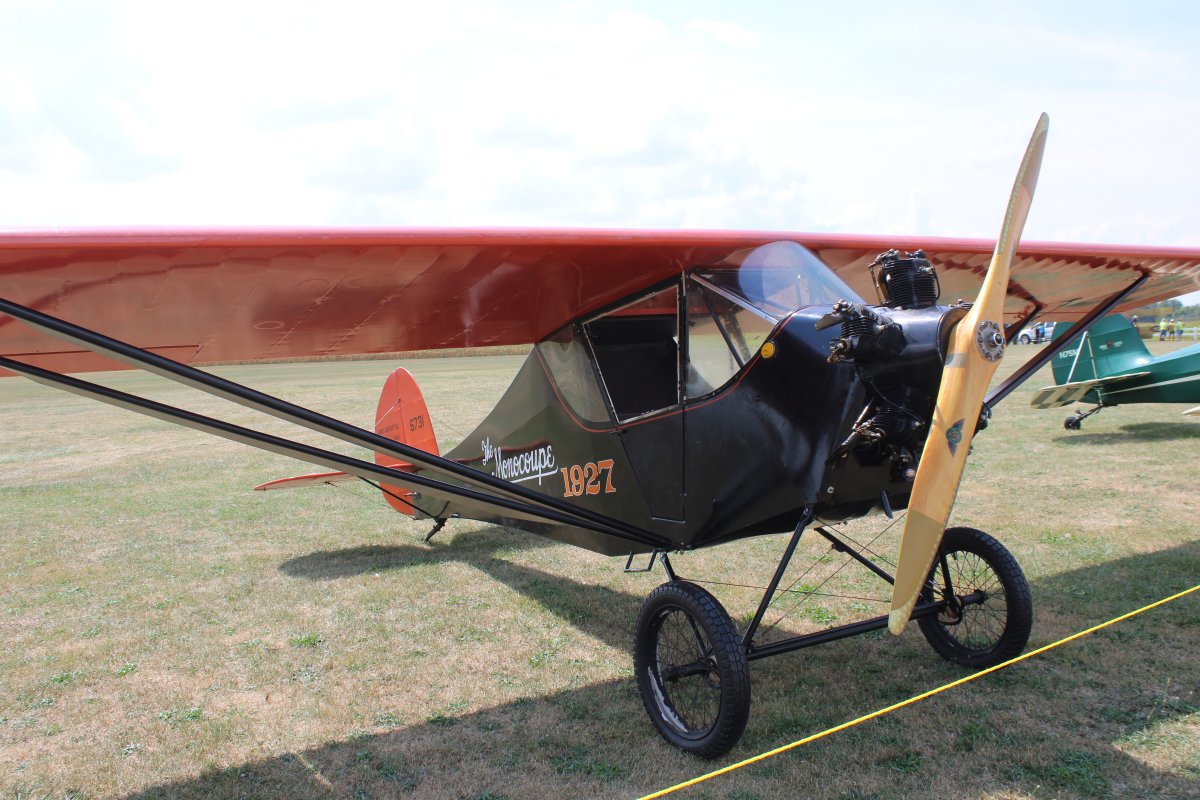 |
|
|
1930 Great Lakes 2T Sport Trainer, powered by a Ranger C-440. These Biplanes were manufactured from 1929 through the early 1930s.
|
| |
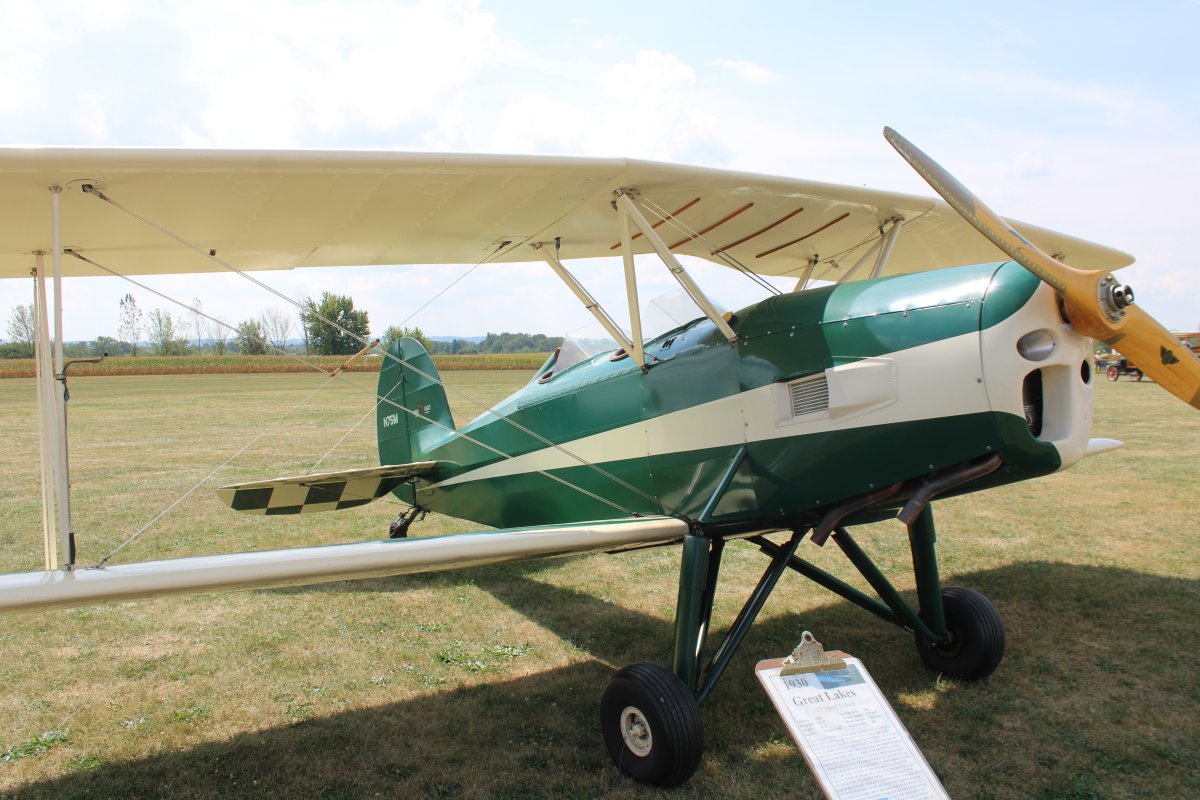 |
|
| |
| |
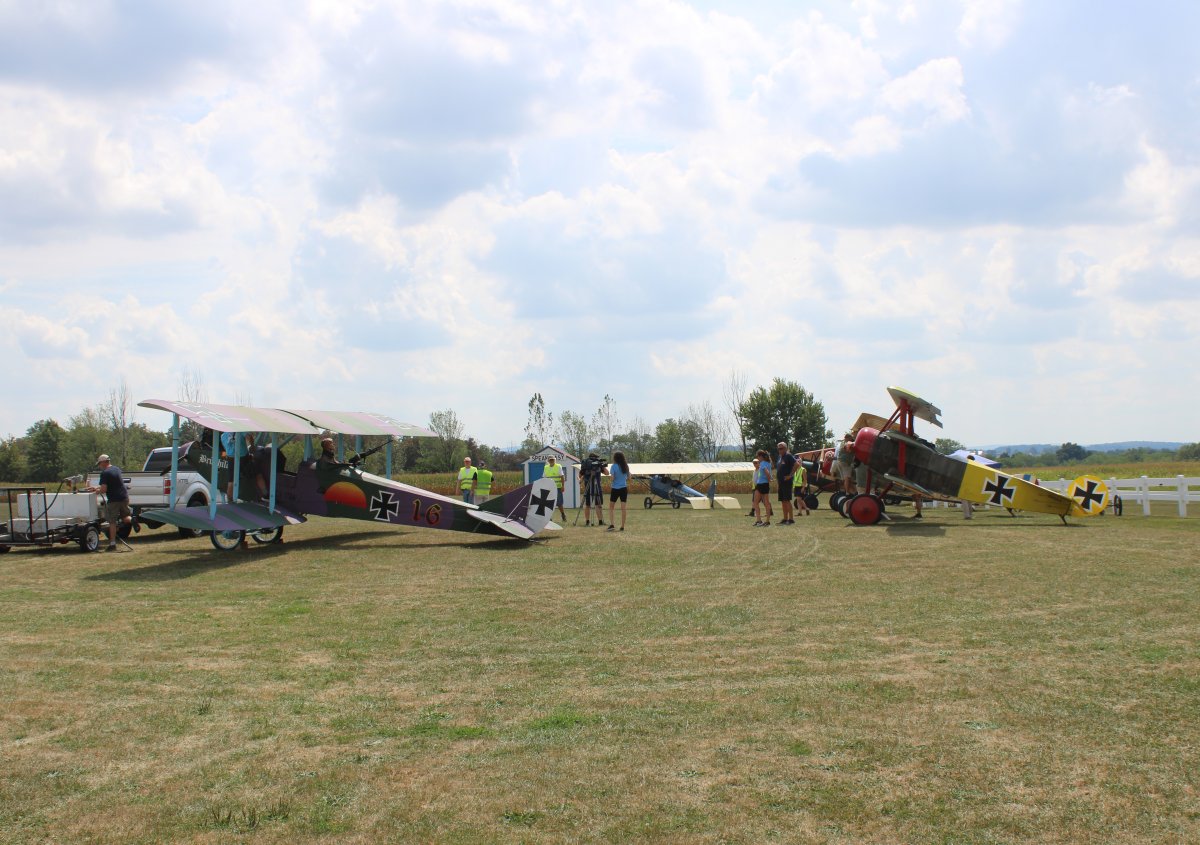 |
|
|
The GAAM Breezy not giving rides today, sitting forlornly in the hangar.
|
| |
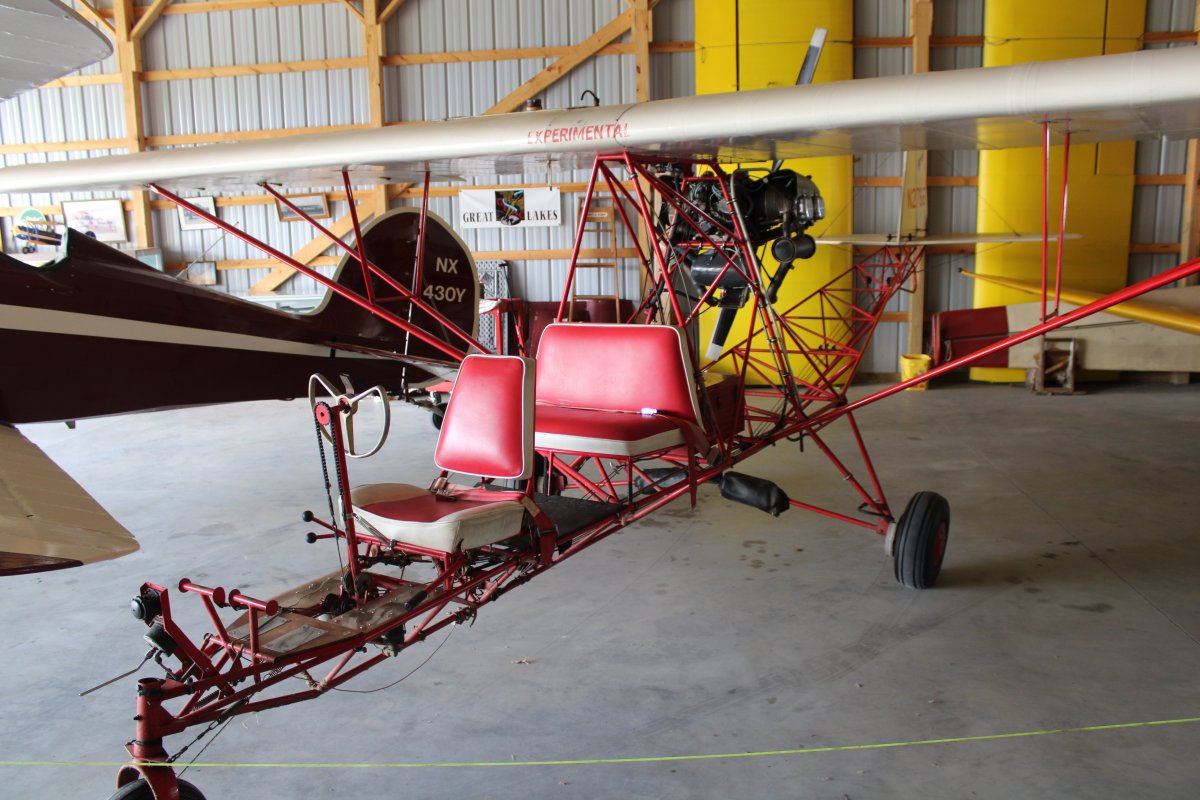 |
|
| An eclectic assortment of aircraft sitting on the grass ramp. Not something you see every day. |
| |
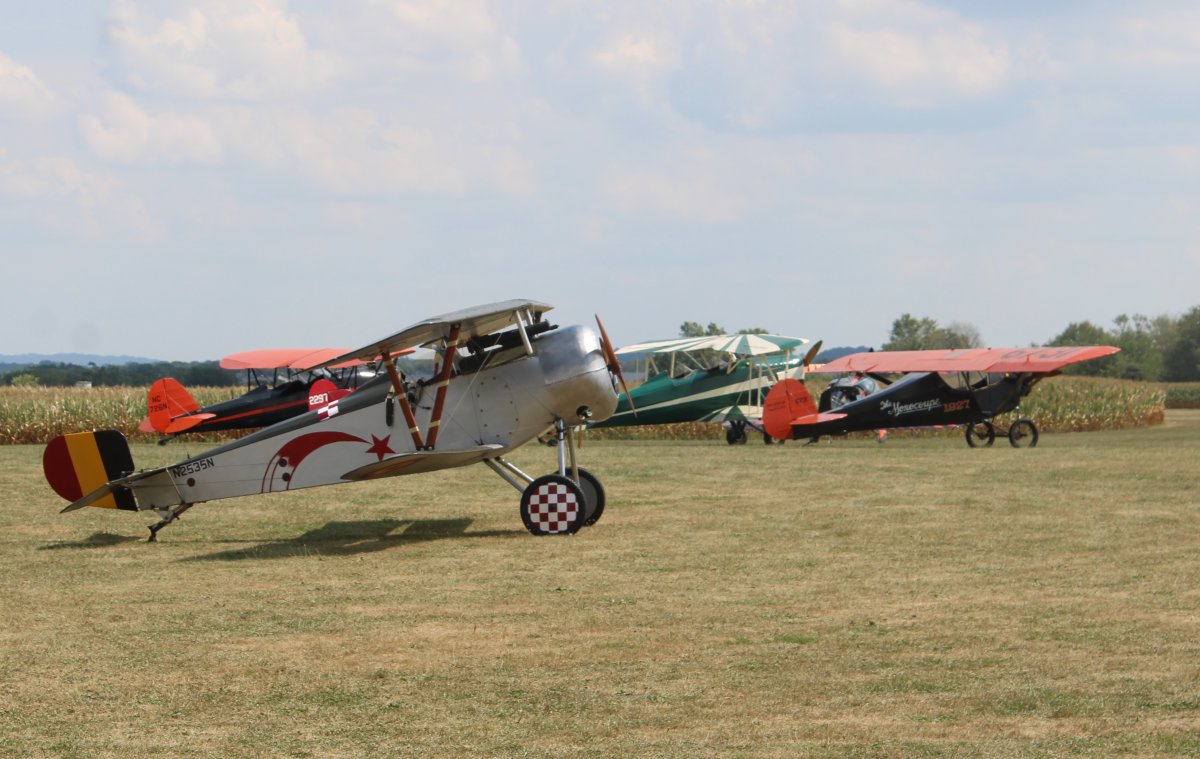 |
|
| The airshow is about to start! I thought there were a lot of people on hand. Someone told me that yesterday there were way more people -- maybe the most GAAM has ever had at one of its airshows. I'm guessing the Triplanes drew them in. |
| |
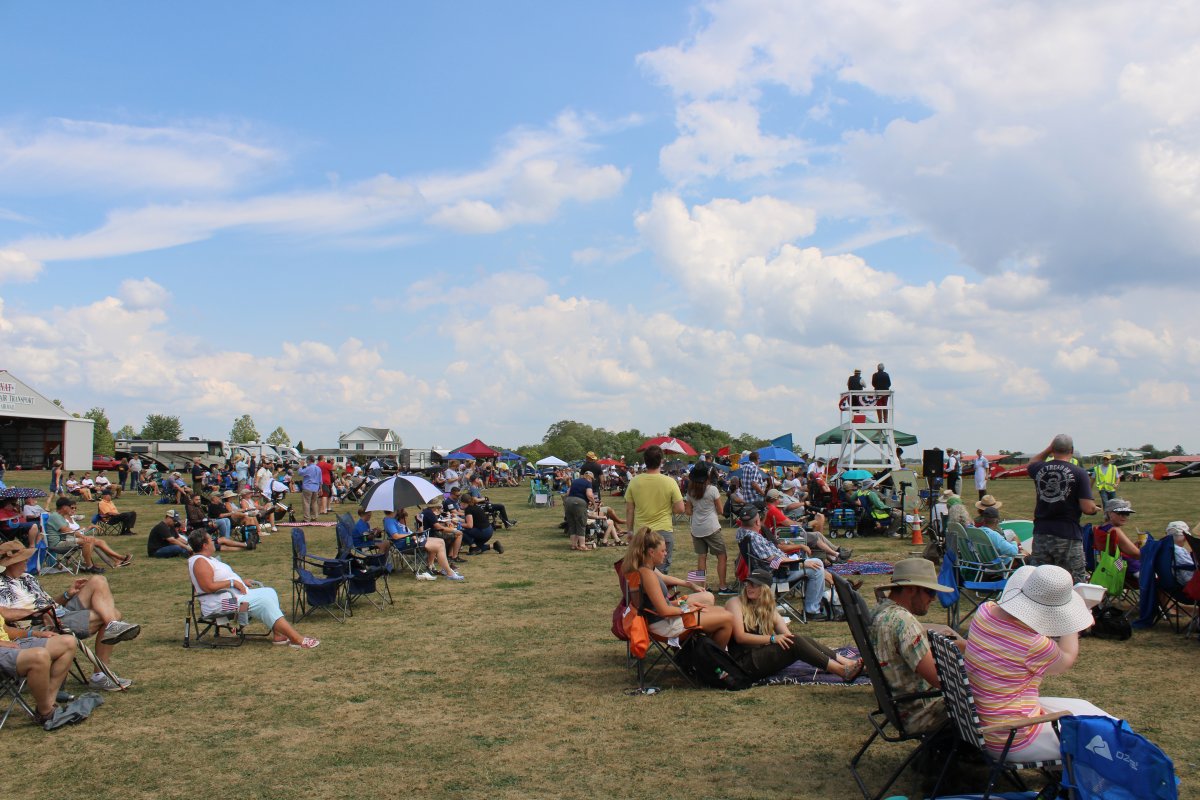 |
|
| Lynnette and Griffin watching the air show. |
| |
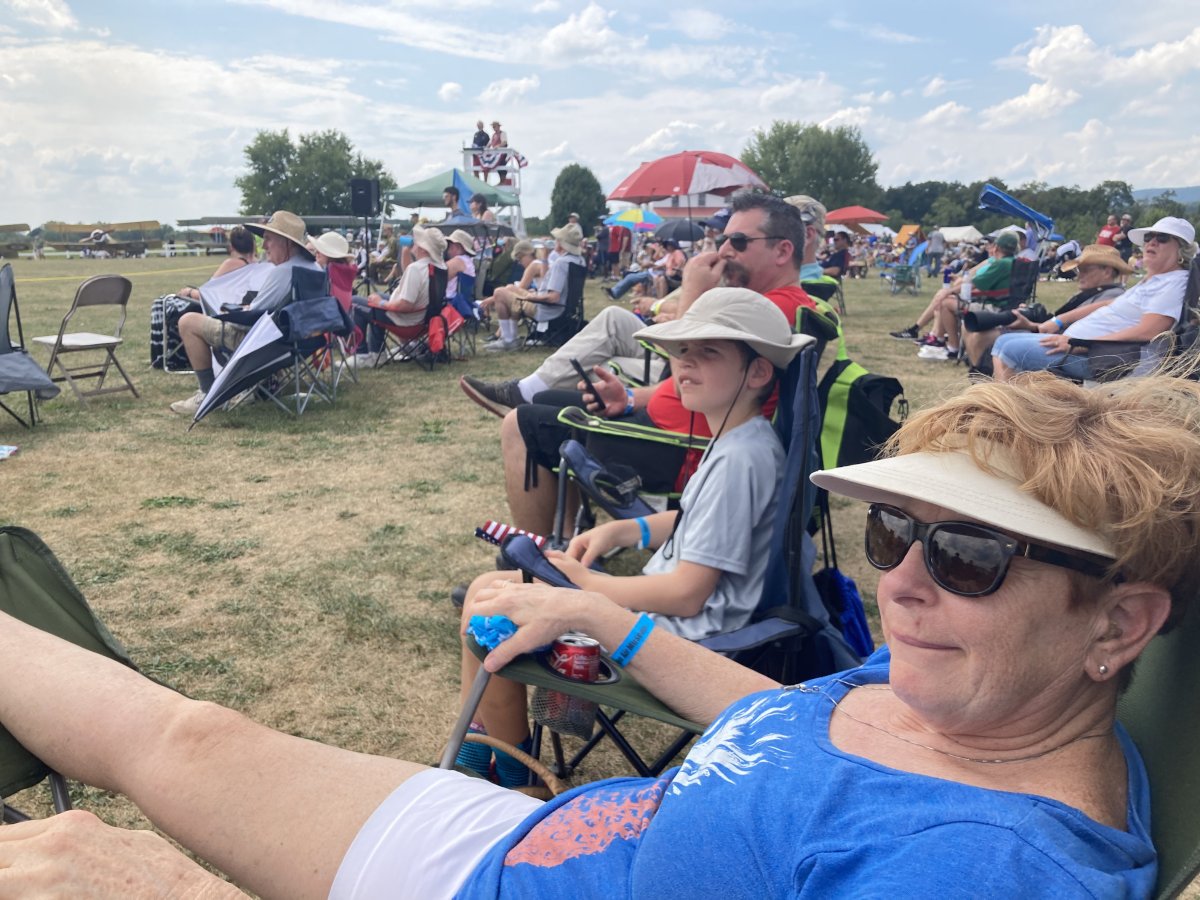 |
|
|
Griffin enjoying the show.
|
| |
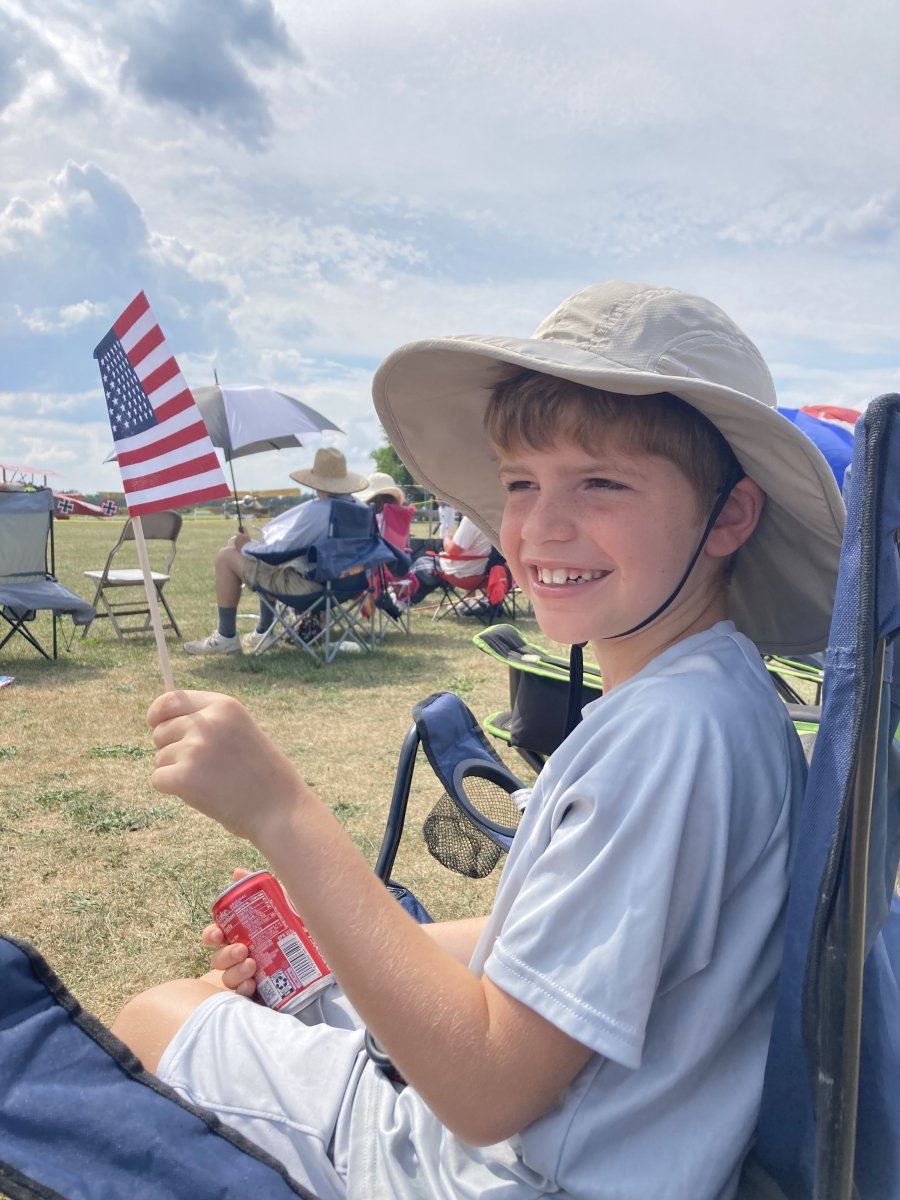 |
|
|
Andrew King opened the air show by taking off in the Red Baron Triplane and flying around trying to cut a streaming roll of toilet paper. Then he turned south and disappeared! The annoucer said he had to leave early to get back to Virginia ahead of some bad weather.
And then there were two ....
|
| |
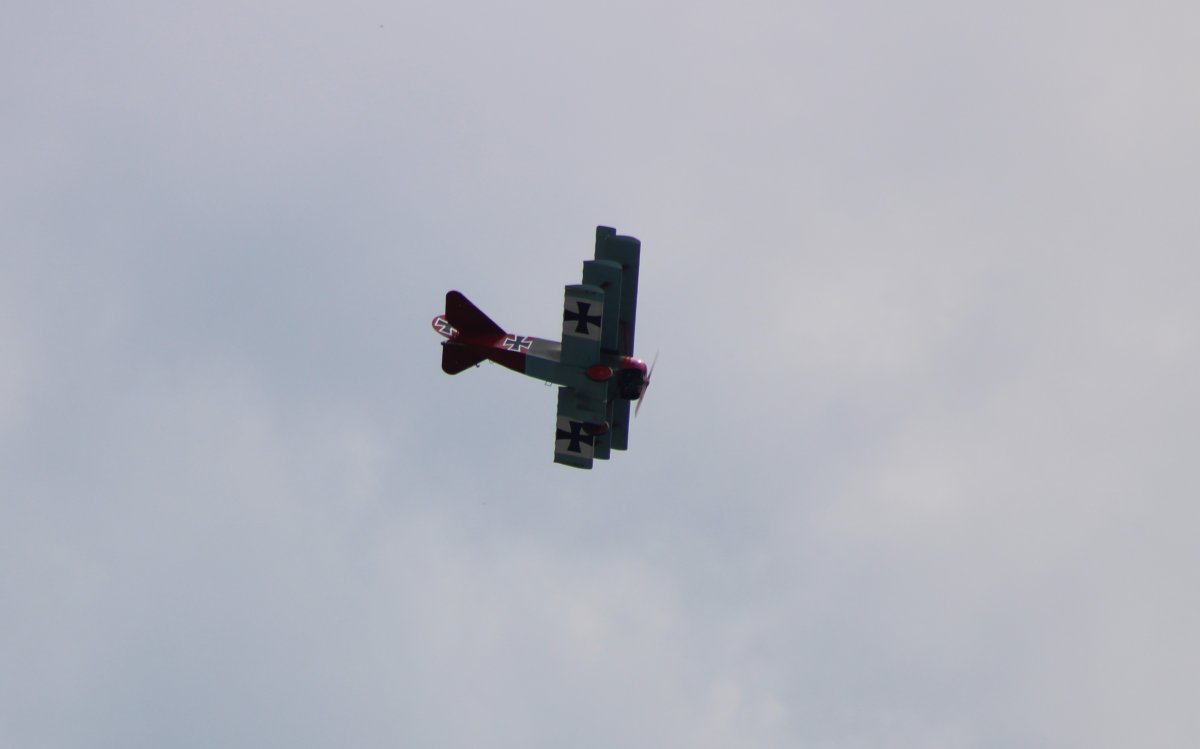 |
|
| The Great Lakes biplane performs an aerobatic routine. |
| |
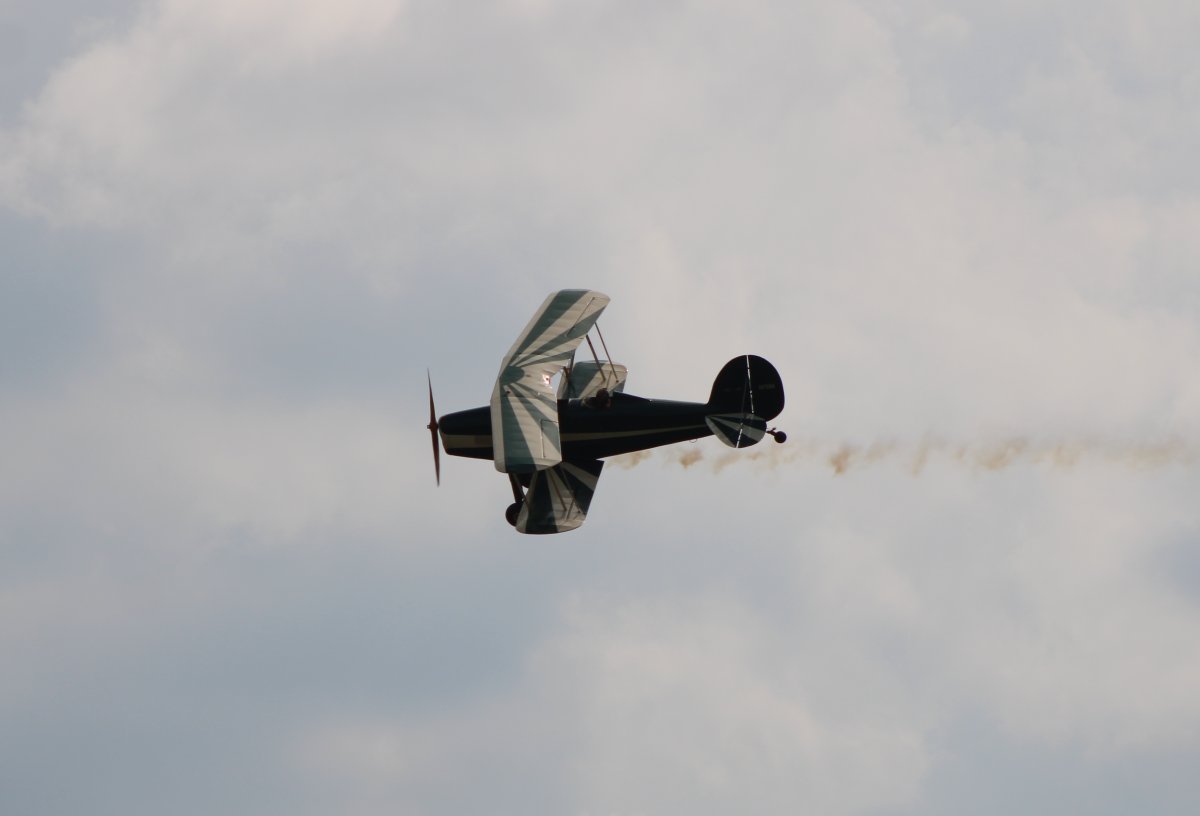 |
|
|
I thought Mark Meredith and Chippy flew perhaps the most exciting aerobatic routine of the show.
|
| |
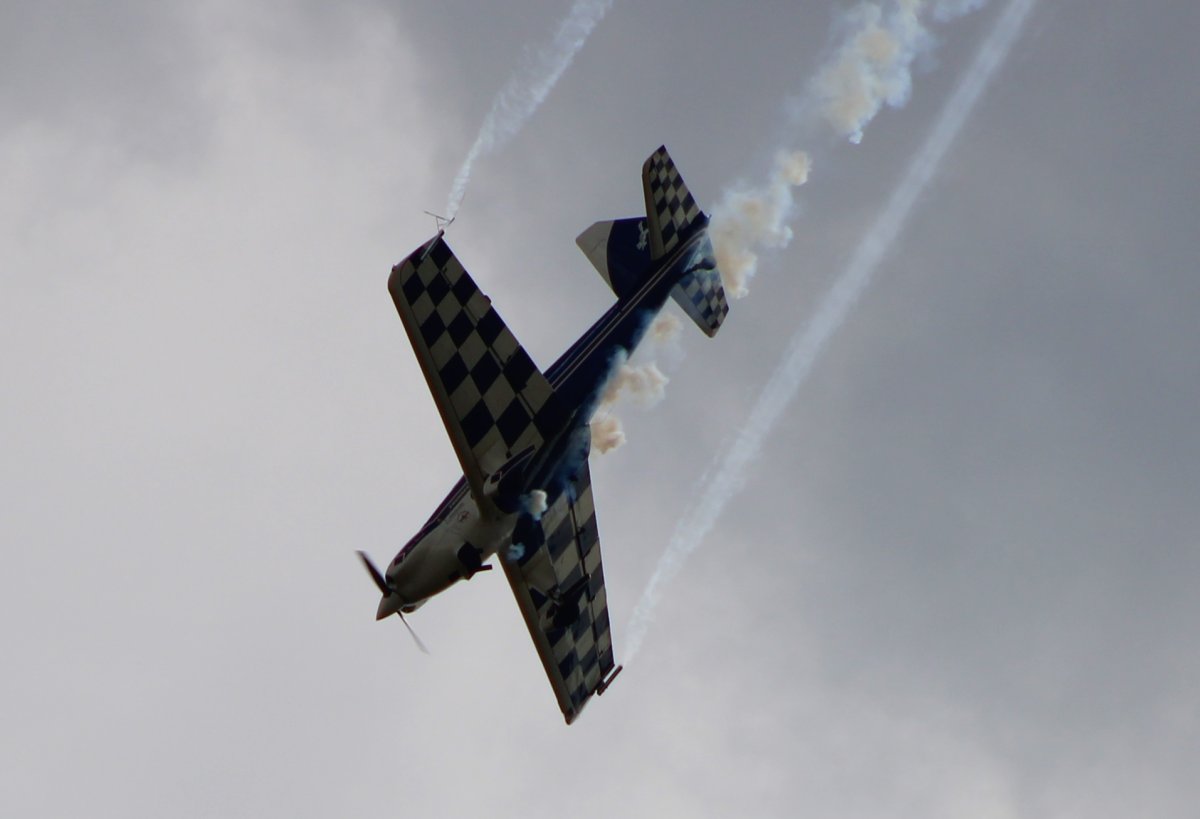 |
|
| Mark taxiis by waving to the crowd after his flight. |
| |
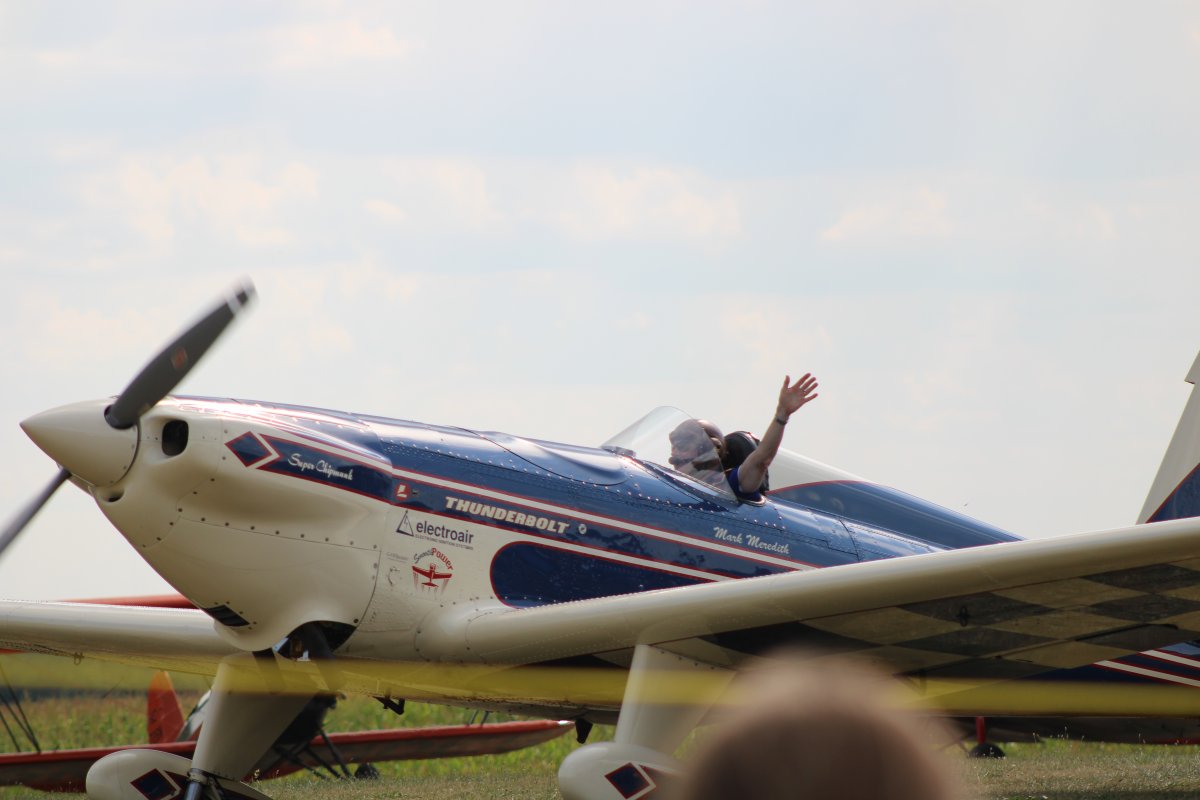 |
|
|
The big, beautiful, but slow Jenny flies a routine.
|
| |
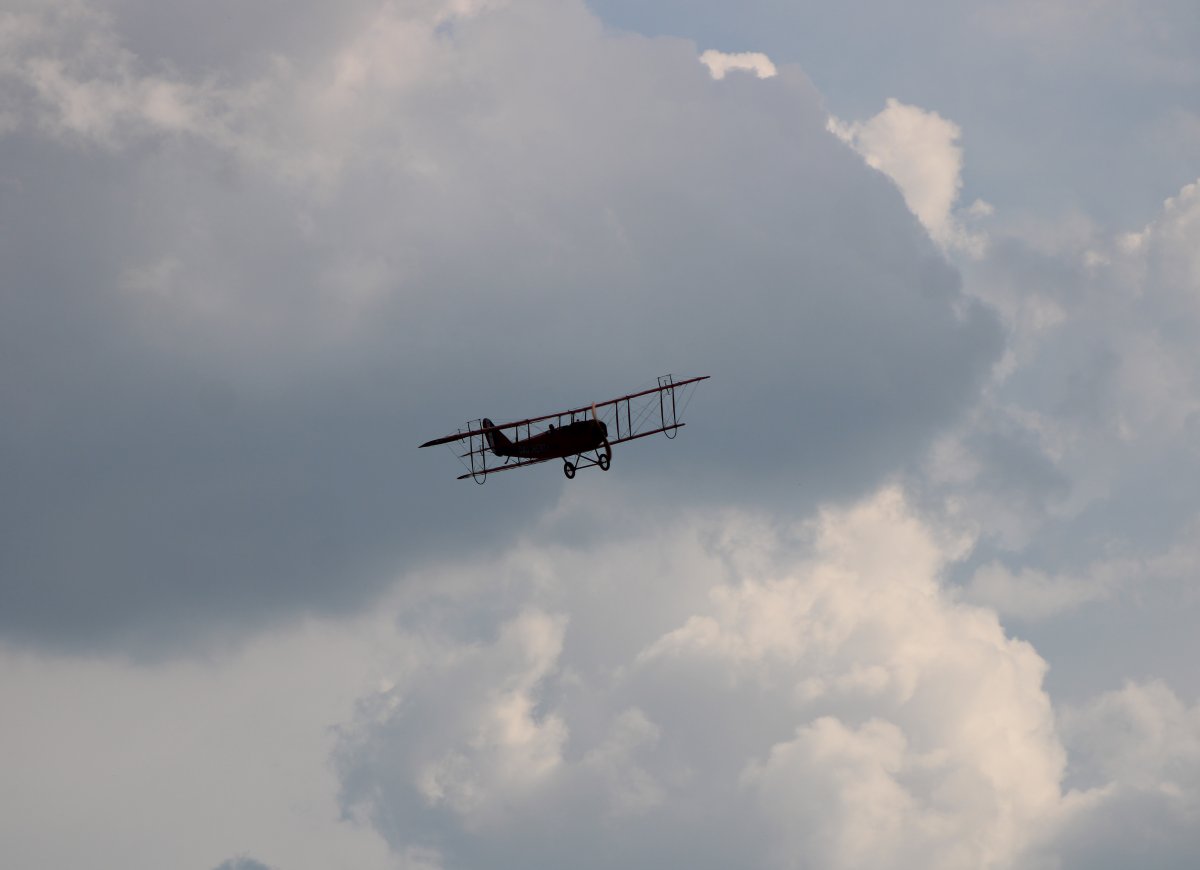 |
|
| |
| |
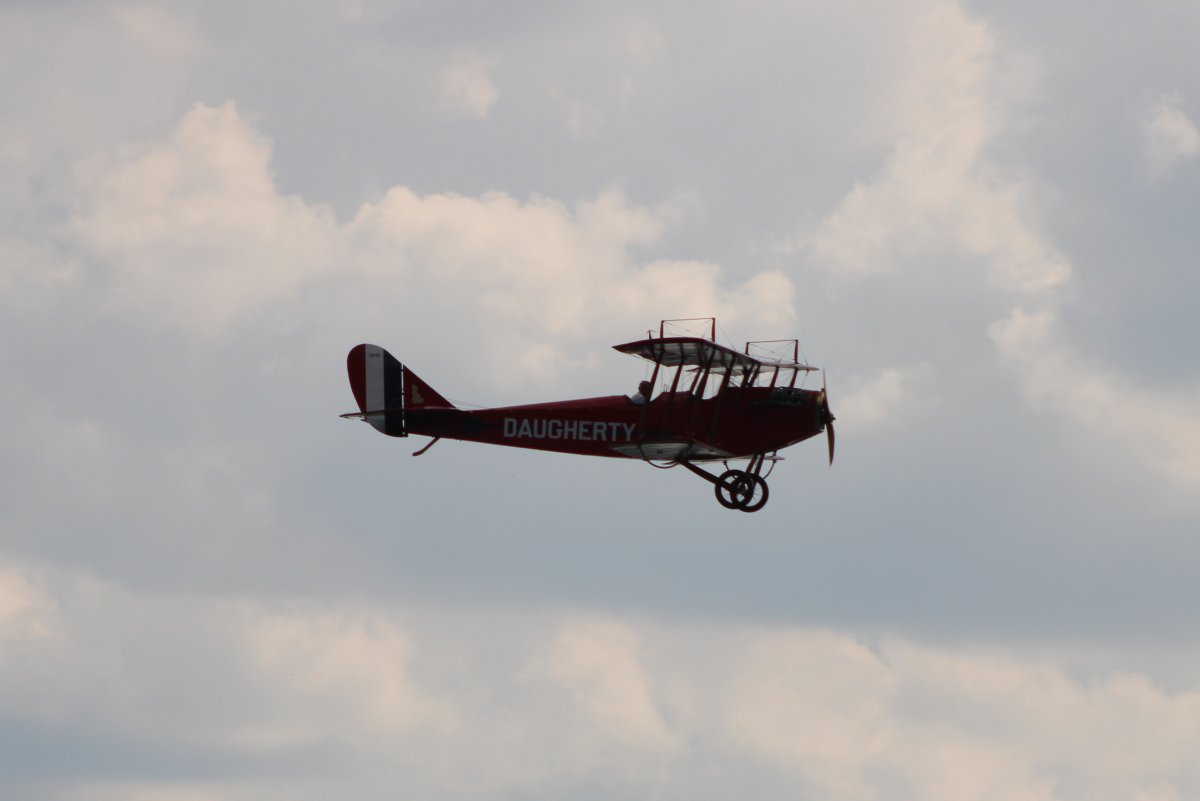 |
|
|
The little Nieuport claws for altitude.
|
| |
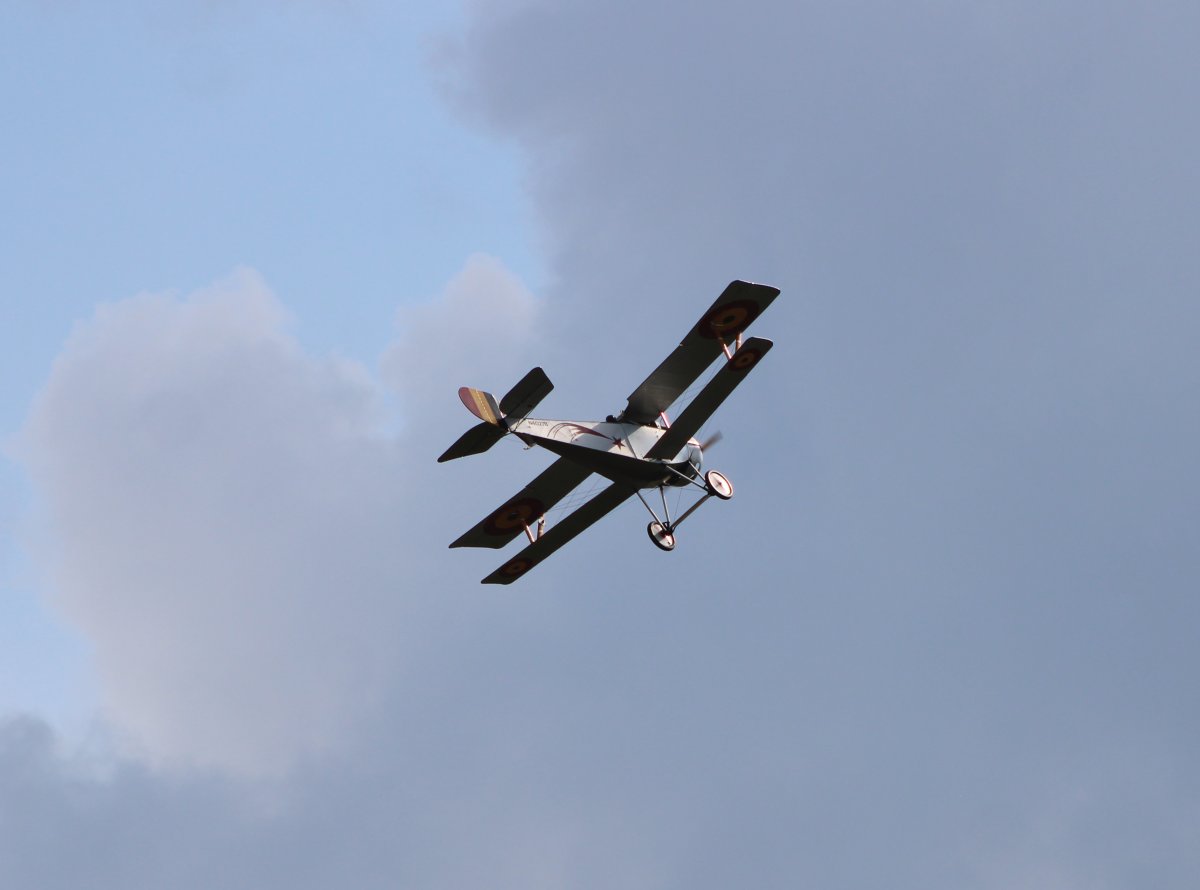 |
|
| The Rhinebeck Sopwith Pup rolling out after landing. |
| |
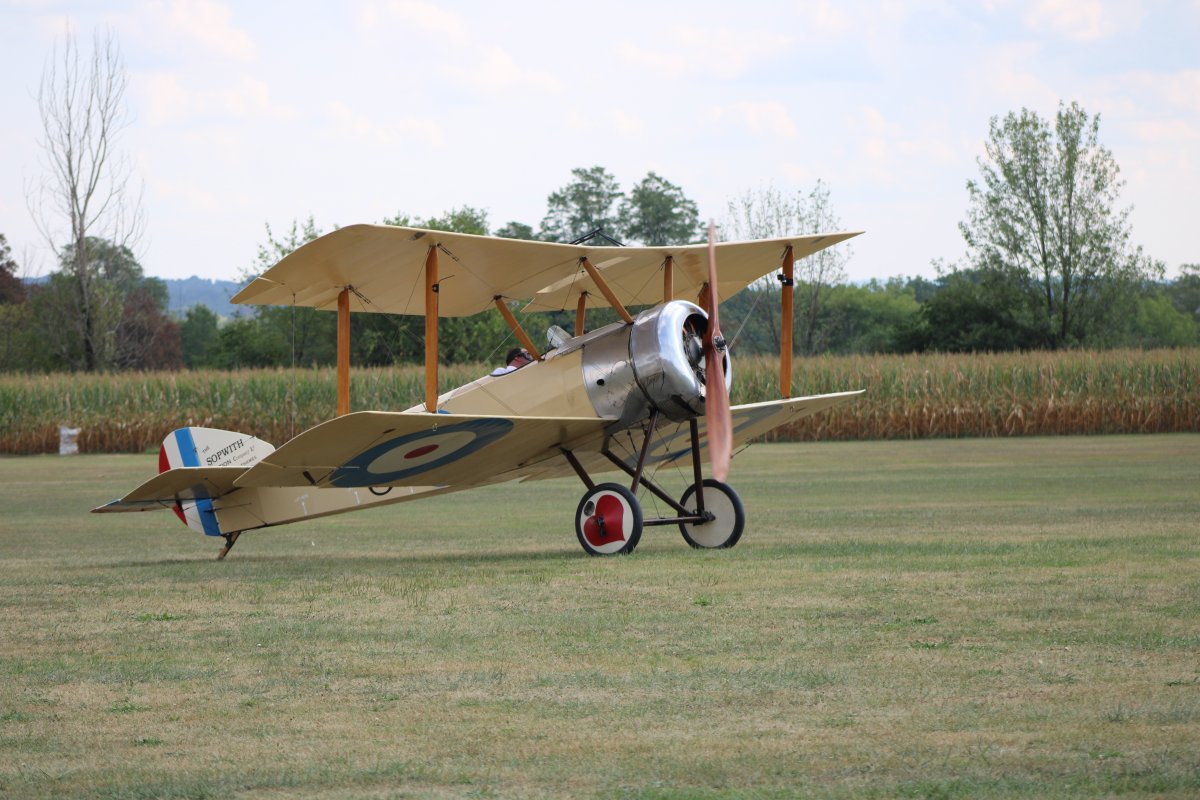 |
|
|
At one point, the Zebra Triplane started up, but then the announcer said it had an engine issue and would not fly. The GAAM Triplane started right up.
And then there was one.
|
| |
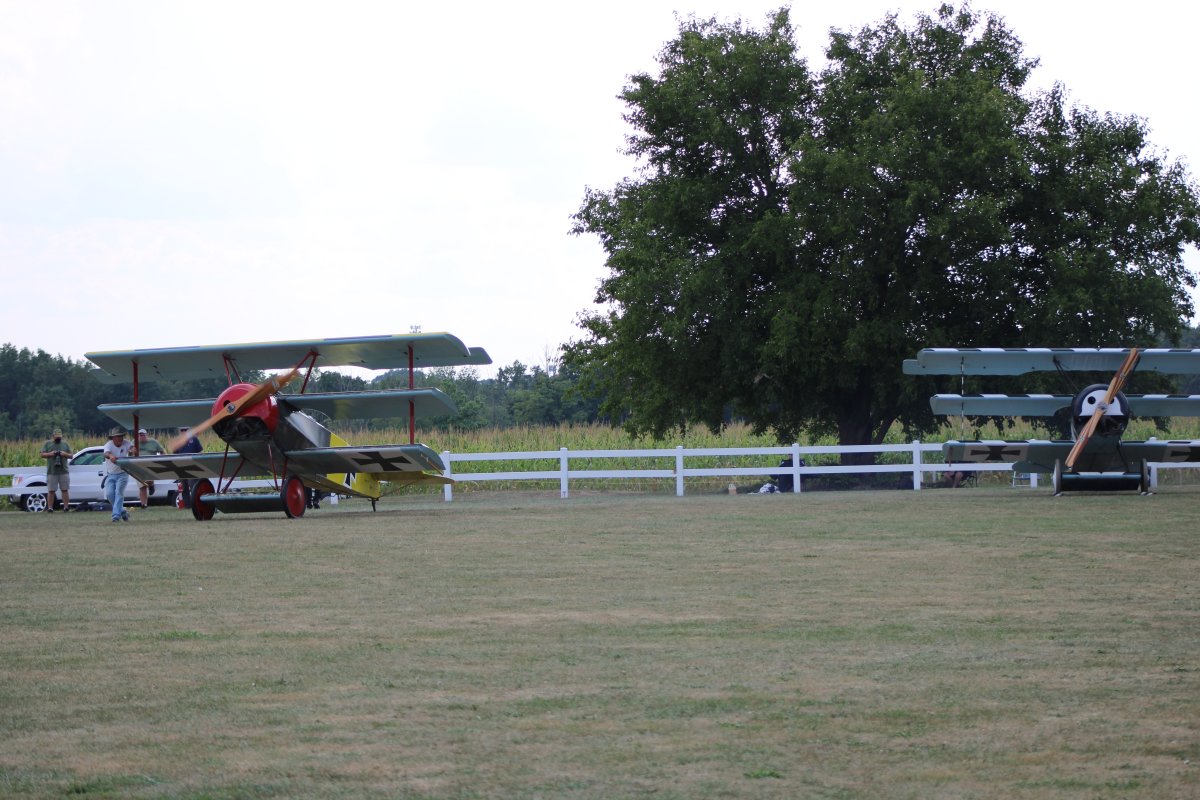 |
|
| With no brakes, and only a slightly steerable tailskid, the Triplane is a handful on the ground. Here, a wing walker holds the right wing to assist the Triplane in a right turn. Notice that you cannot even see the pilot; visibility is not good in this airplane. |
| |
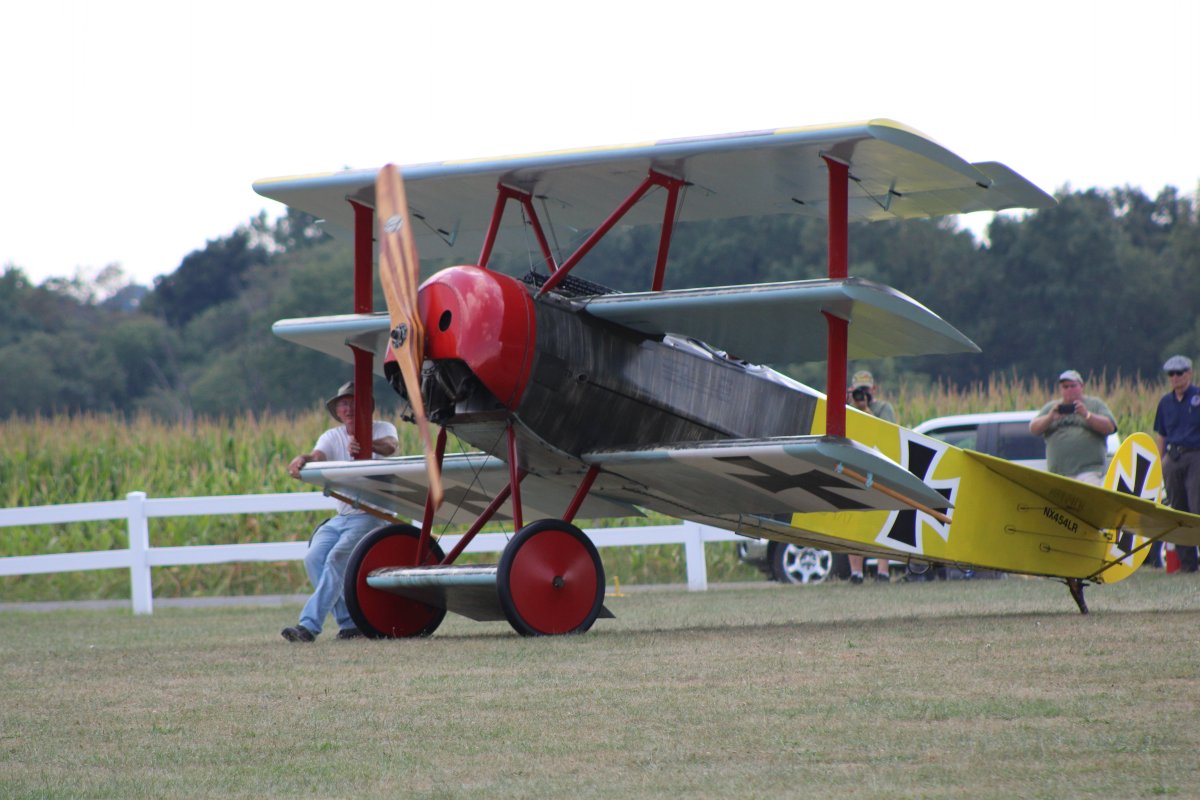 |
|
|
There goes the GAAM Triplane!
|
| |
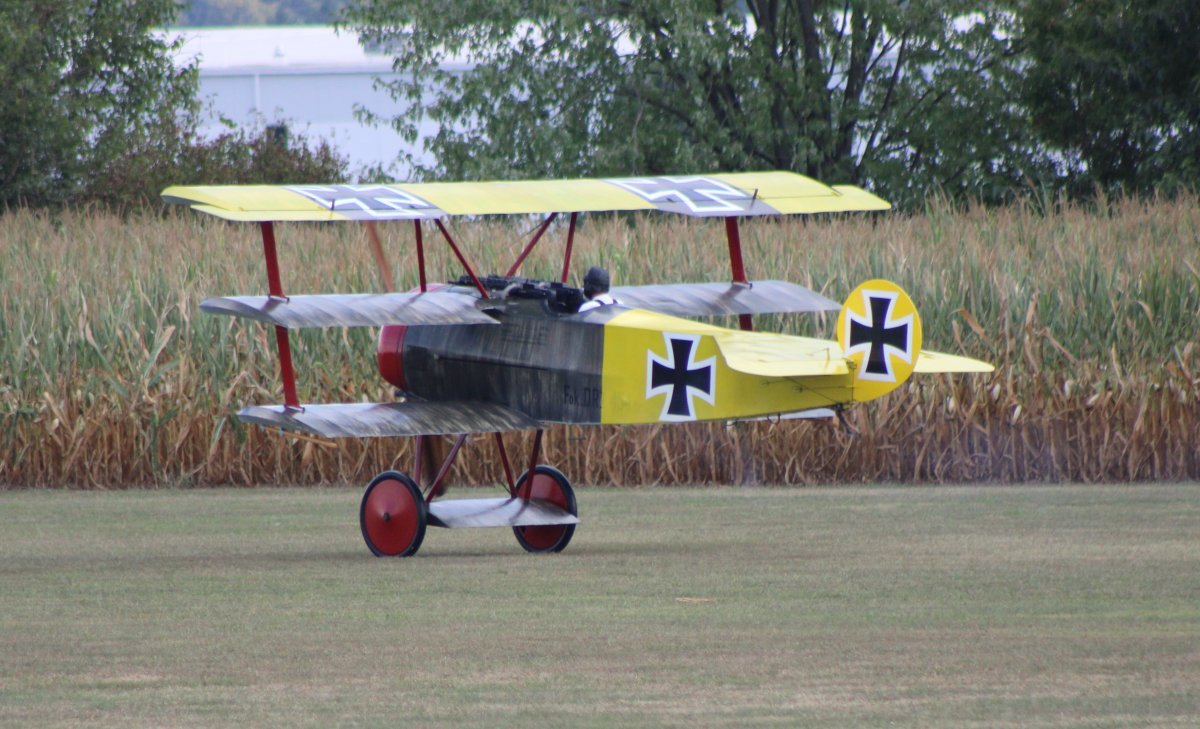 |
|
| This is not what an allied pilot in World War One would want to see. |
| |
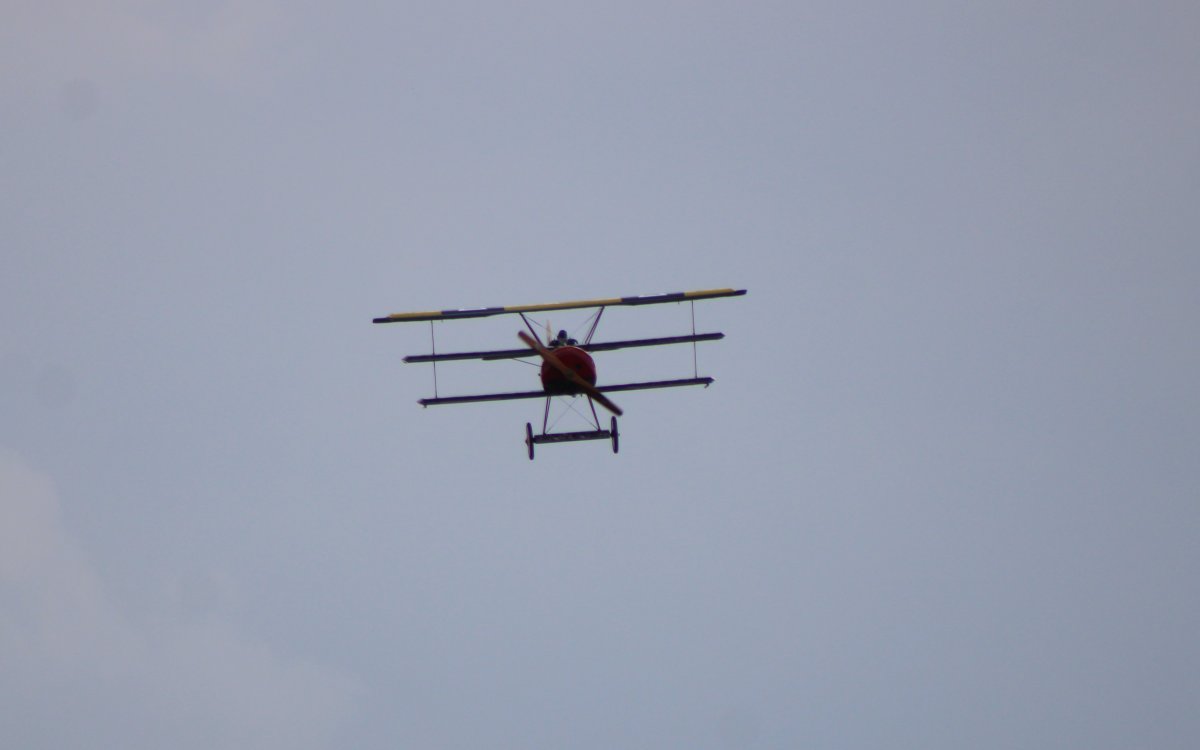 |
|
|
The Triplane is on the tail of the Sopwith Pup.
|
| |
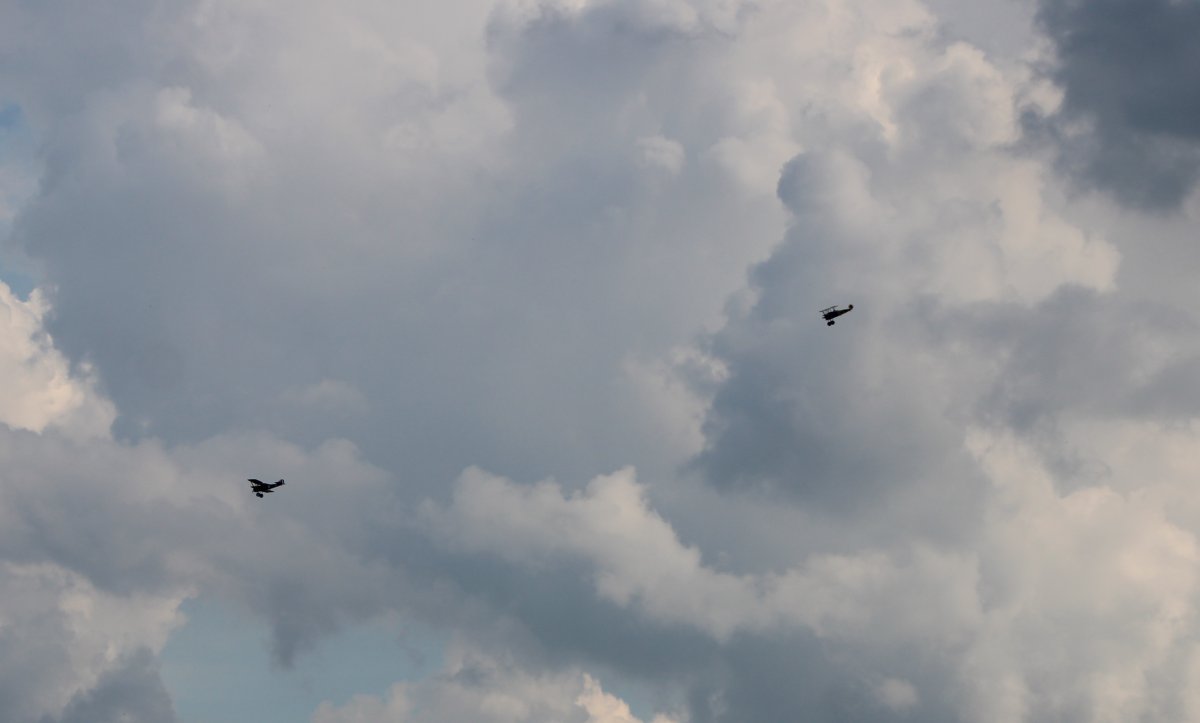 |
|
| Getting closer. |
| |
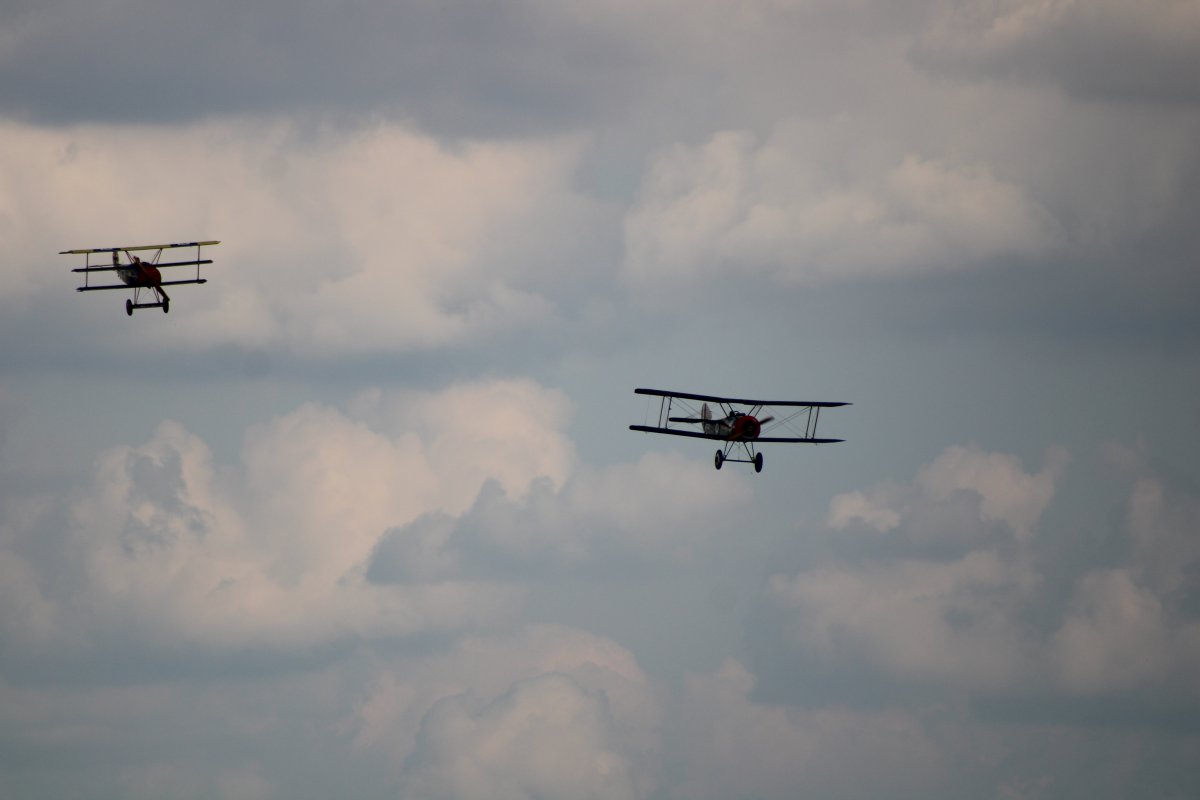 |
|
| Lothar scores another victory. |
| |
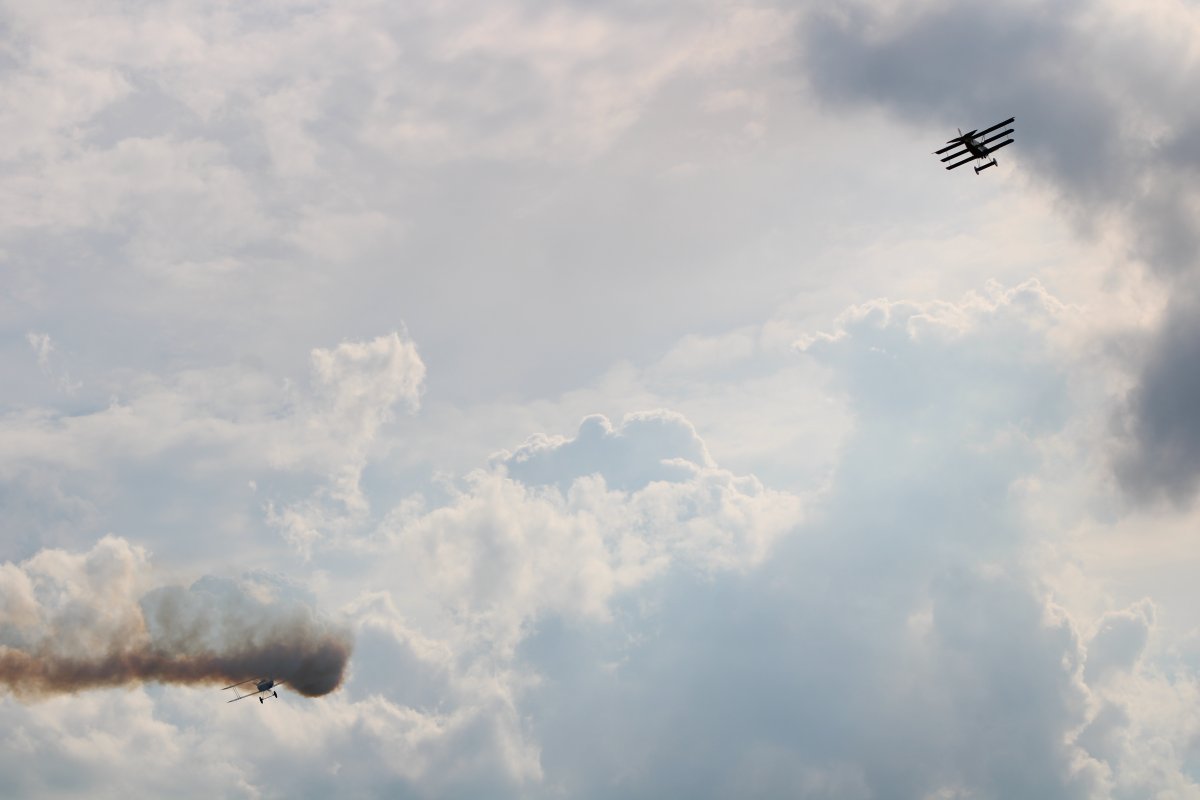 |
|
I was told that all four Triplanes flew together yesterday (Saturday) but today it was not to be. Still, I was glad I drove up to see the show.
Here is a YouTube video put together by Jeff Brooks who went on Friday: Link.
Jeff also wrote the following which gives you a taste: "At one point, Chris Hill and John Elliot were circling each other.
It was so cool to watch, but I was unable to get video because they were right in the sun. They were both turning in an odd "out of trim" way, with their tails swishing around sideways.
Chris would later describe how the torque of the rotary was so strong that he needed full rudder to keep the nose on the horizon while turning.
He was thinking that the replicas with a modern engine would have less torque and more rudder travel available in a turn and which might give them an advantage.
Chris also said that looking over and seeing the red wings just a few 100 feet away while circling must have been exactly what it looked like to spar with Richthofen 100 years ago.
I think Chris has Gopro video of this sparring, I can't wait for him to post it.
John was talking about how clearly he could see Chris' face and make out his expressions while circling.
The other thought I had was how you read about the rotaries having a total loss oil system. But when you see them after they land, they are totally covered in oil. The landing gear, lower wings and underbelly are dripping. Fred Murrin was telling me how there is a famous picture of Verner Voss standing in front of his plane. The plane is covered in oil and looks a bit beat up. That picture was taken two weeks after the plane left the factory. I would get concerned when i see a bit of oil on mine plane after a flight, but after seeing what these guys with the rotaries have to deal with I'm amazed."
|
| |
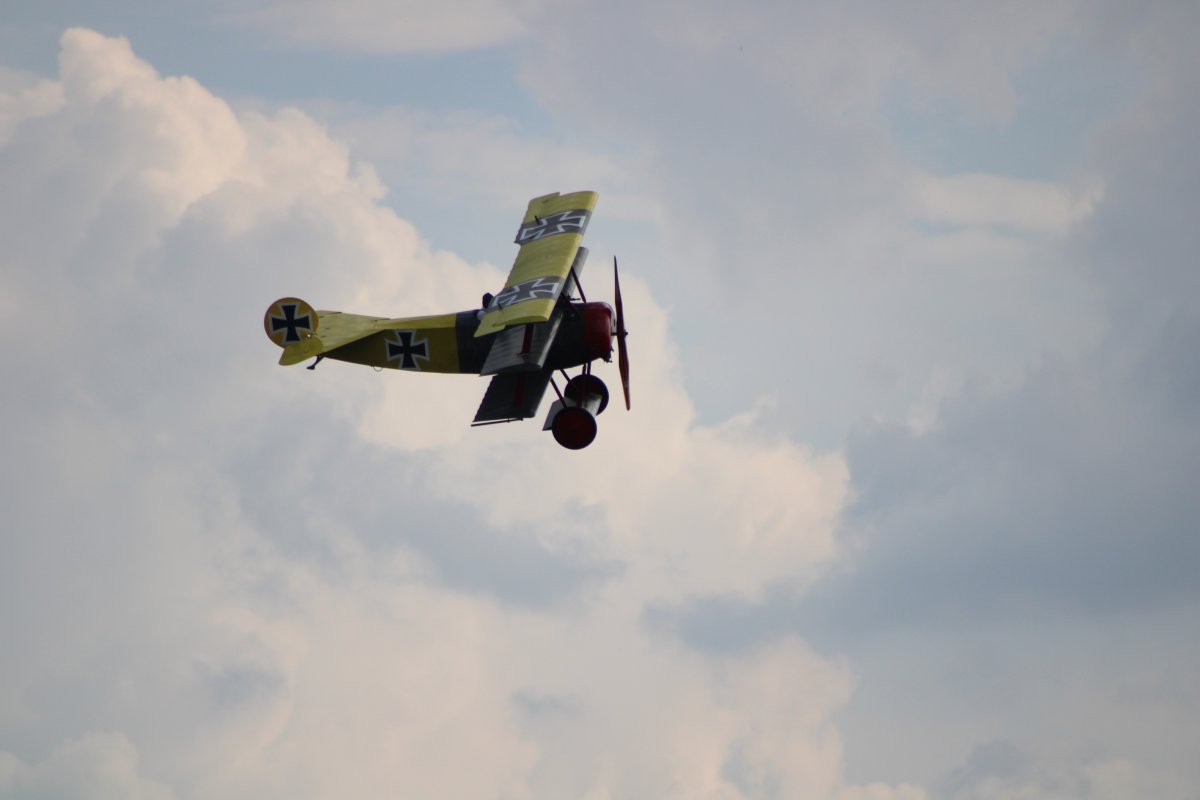 |
|
|
Here are some pictures taken by others:
This amazing picture was taken from the Red Baron Triplane, and shows Andrew King cutting a ribbon of toilet paper with Grimes field dead ahead. Can you see us down there? I was amazed at how clear this picture looks because looking from the ground to this Triplane wasn't that great. I think the clouds in the background made for poor picture-taking from the ground. The background was very hazy.
|
| |
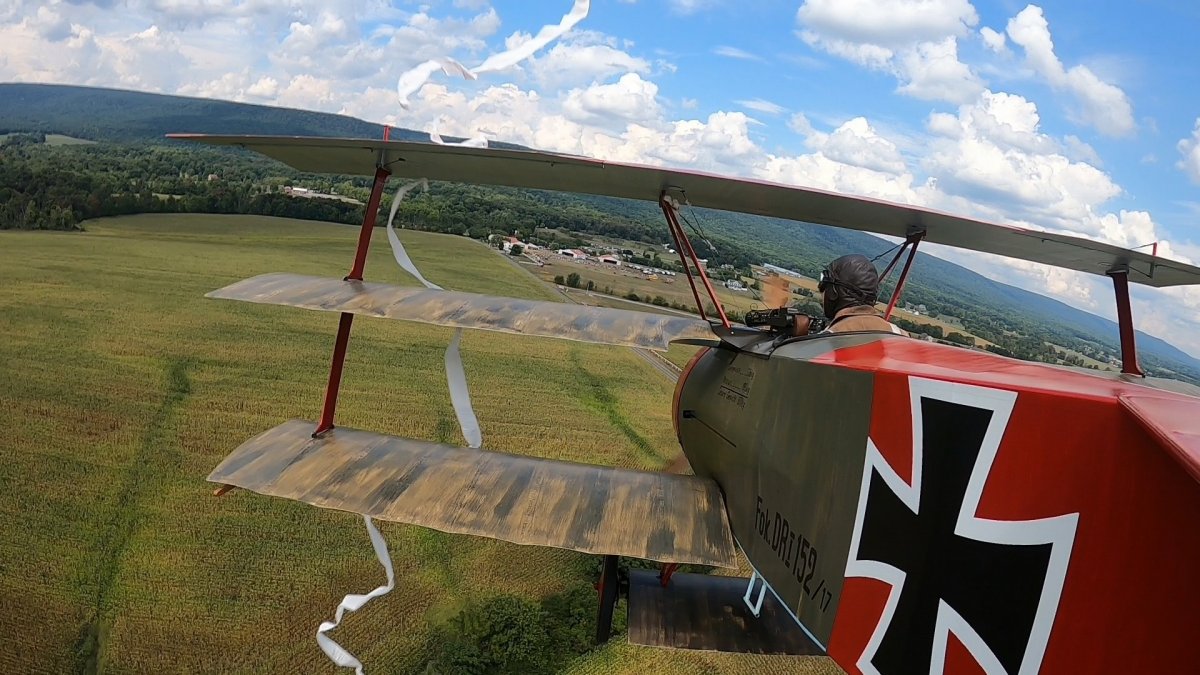 |
|
|
Another aerial picture of the Red Baron Triplane.
|
| |
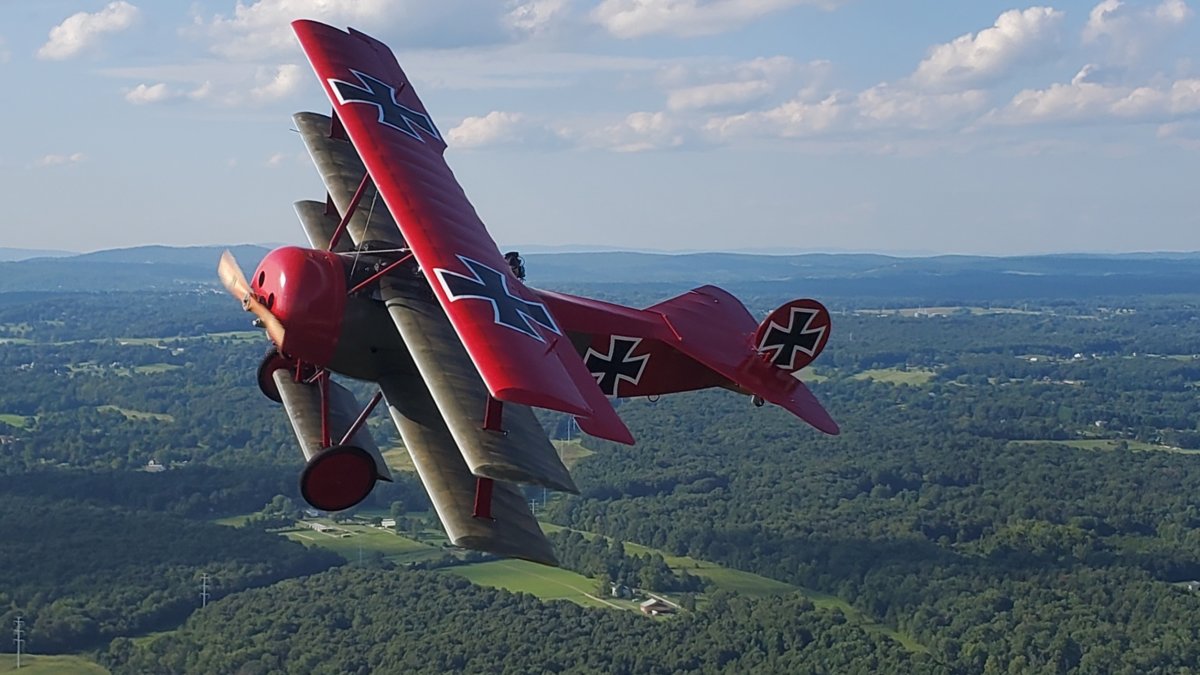 |
|
|
A rare sight: four Triplanes on the flight line.
|
| |
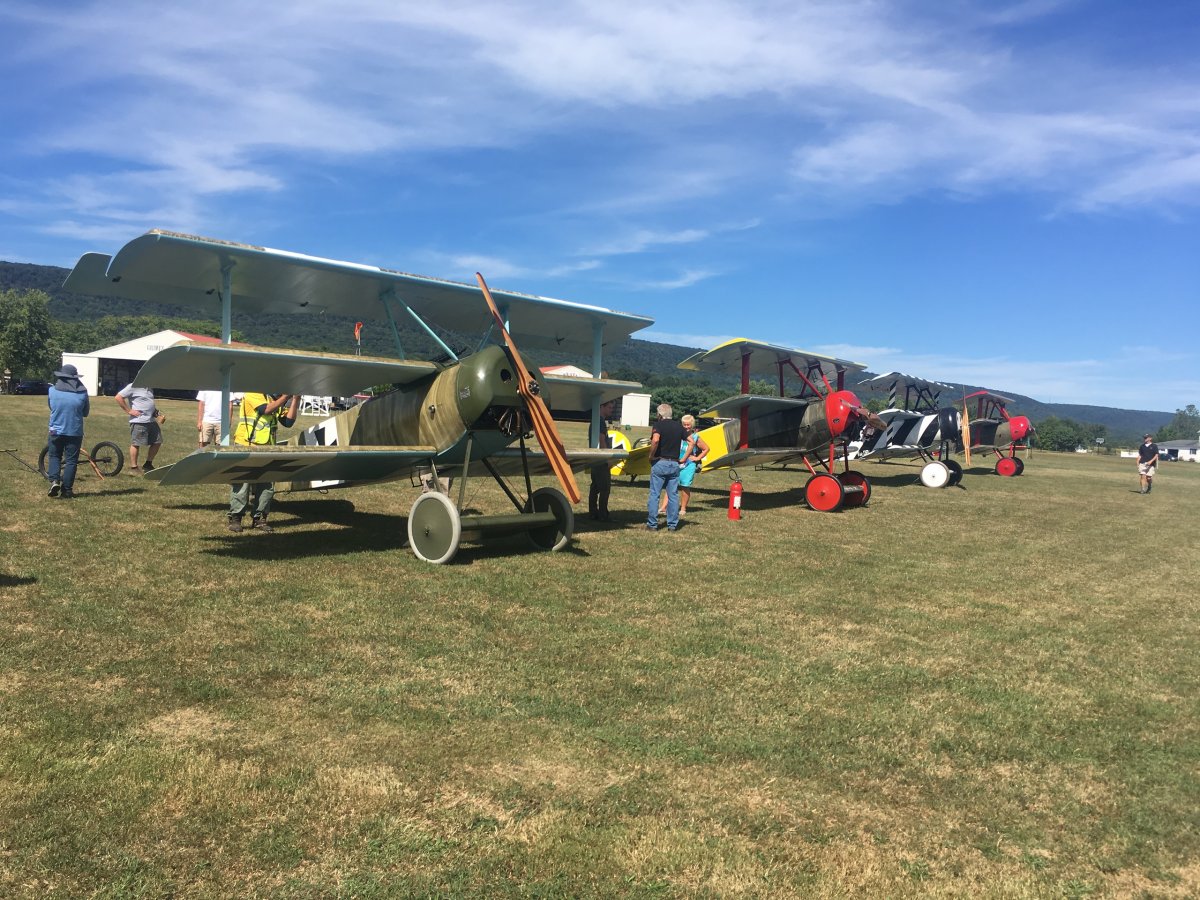 |
|
|
From the right rear quarter with a couple of Sopwith Pups.
|
| |
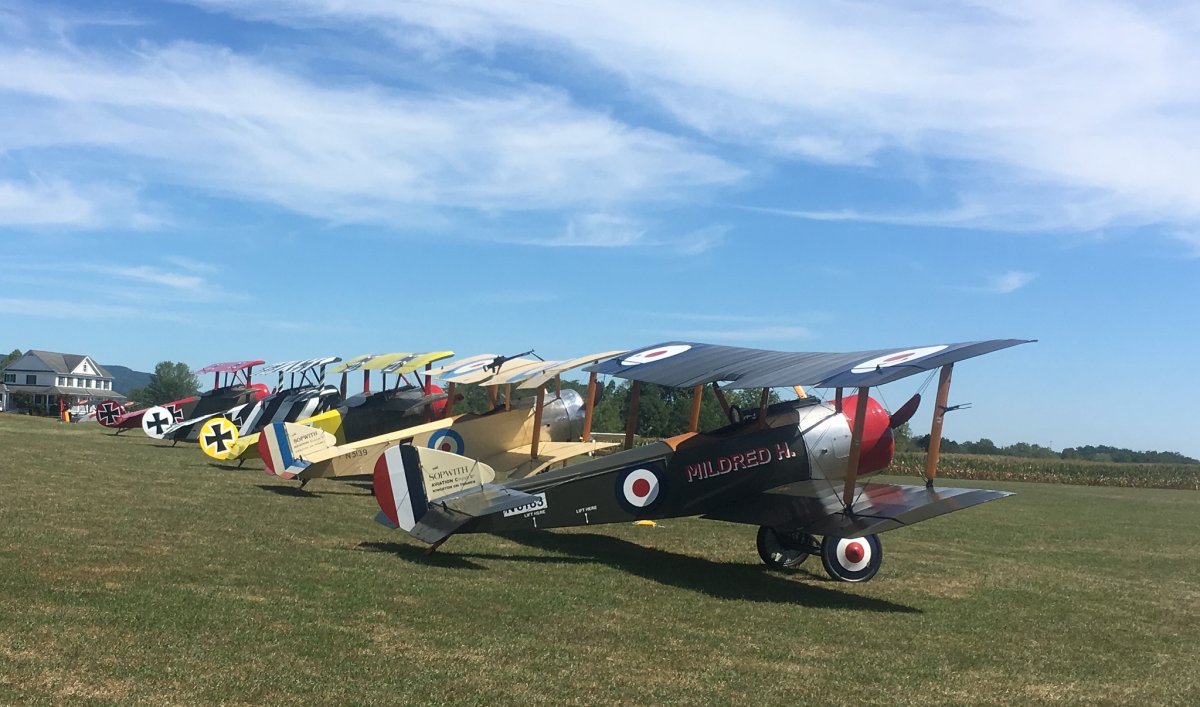 |
|
|
From the left rear quarter.
|
| |
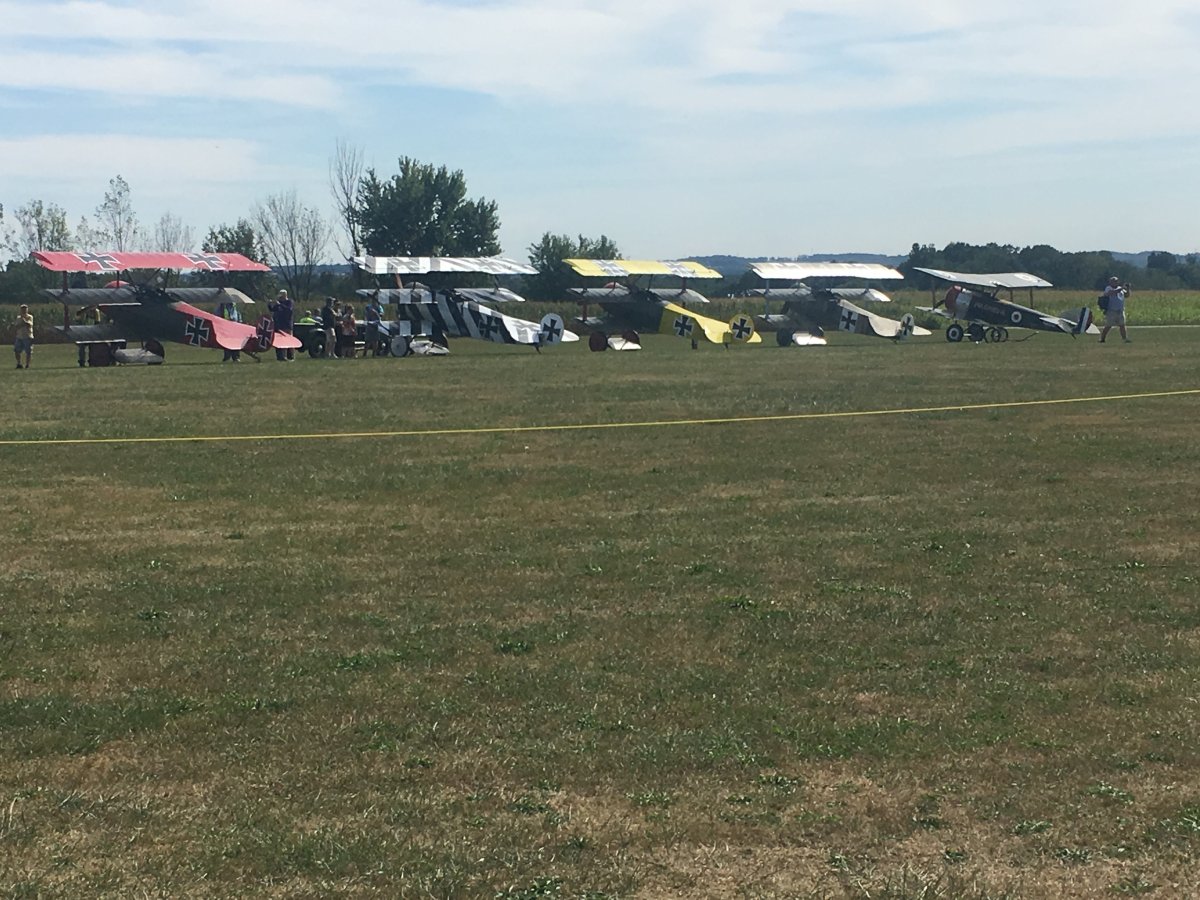 |
|
|
Lynnette and Griffin noticed this moth with a very unusual color scheme on the car window.
|
| |
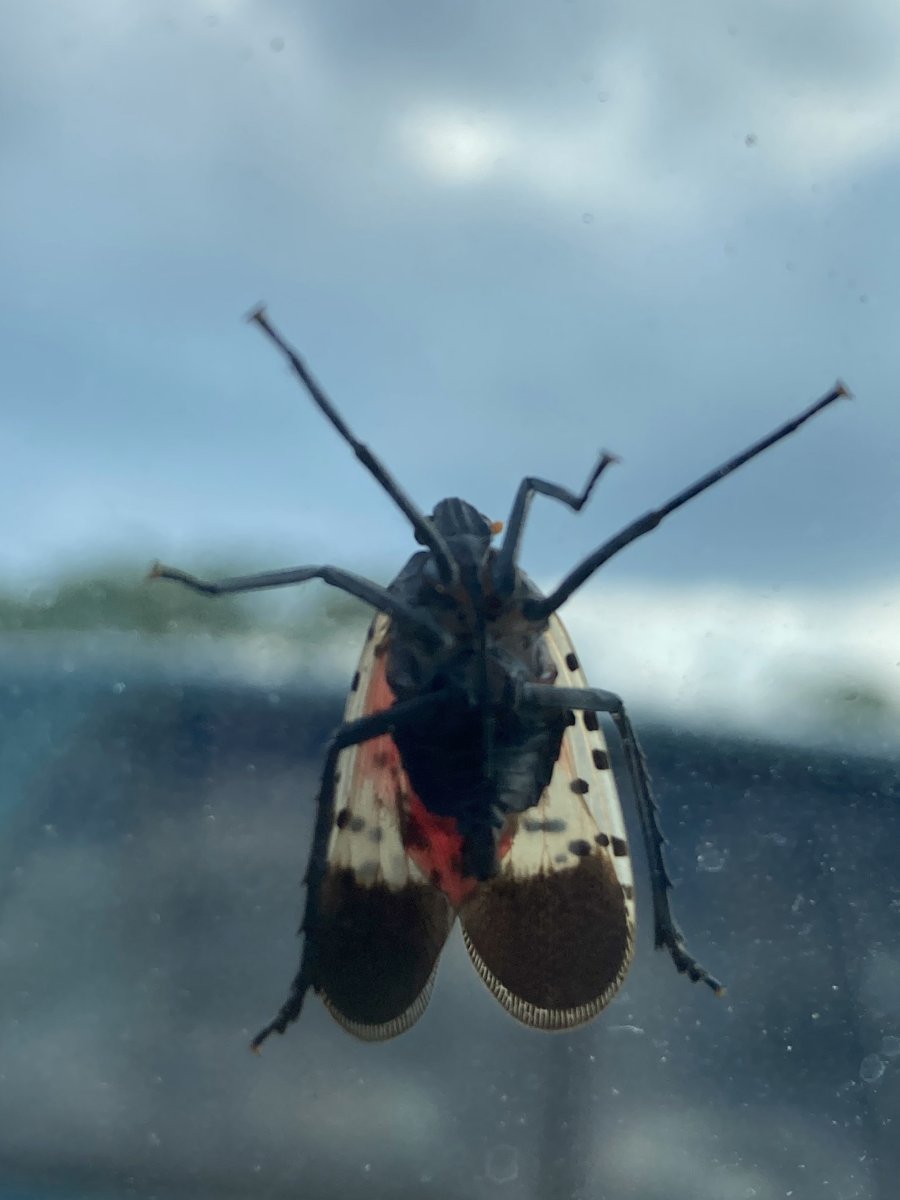 |
|
|
Later we found out it is an invasive species! It's the Spotted Lanternfly. Alas, Lynnette let it get away.
|
| |
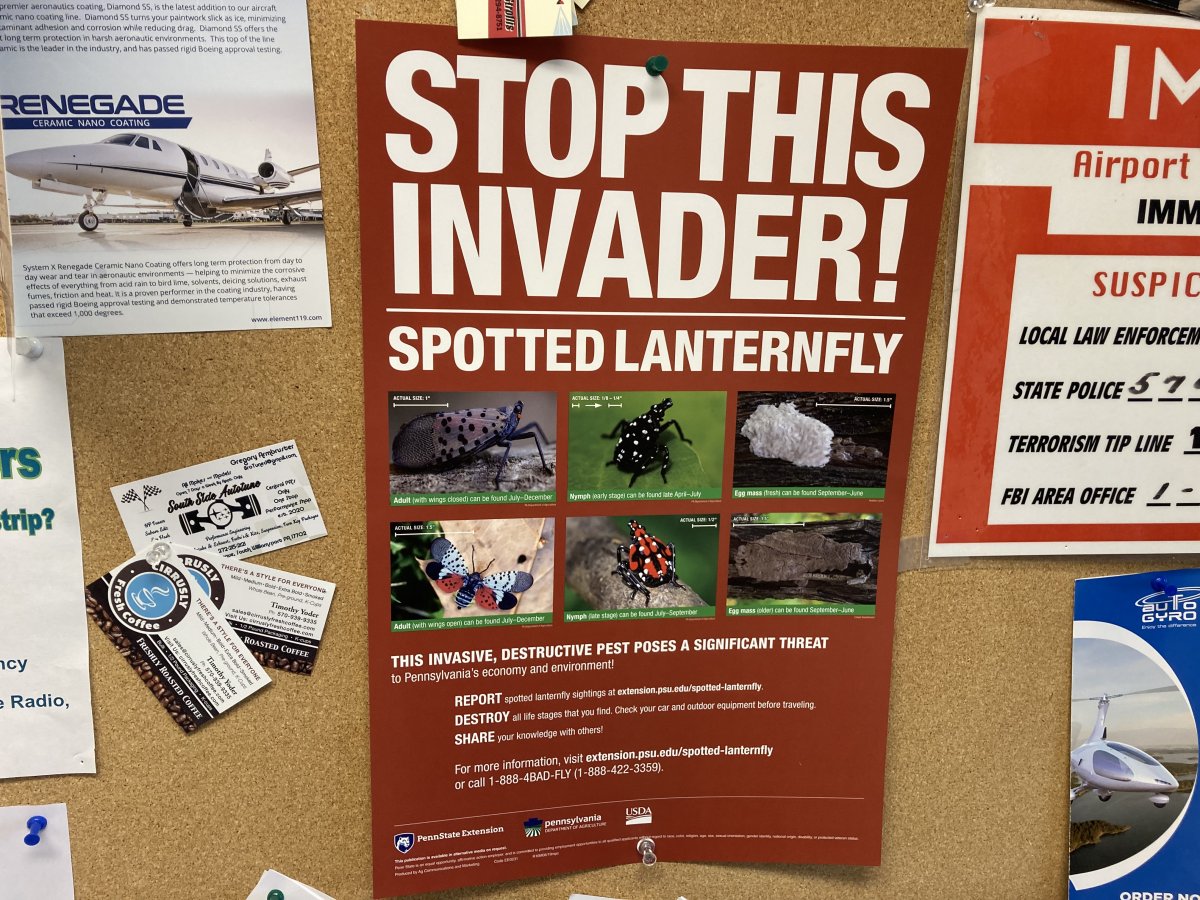 |
|
| |
| |
|
|
|
|
|
|






























































